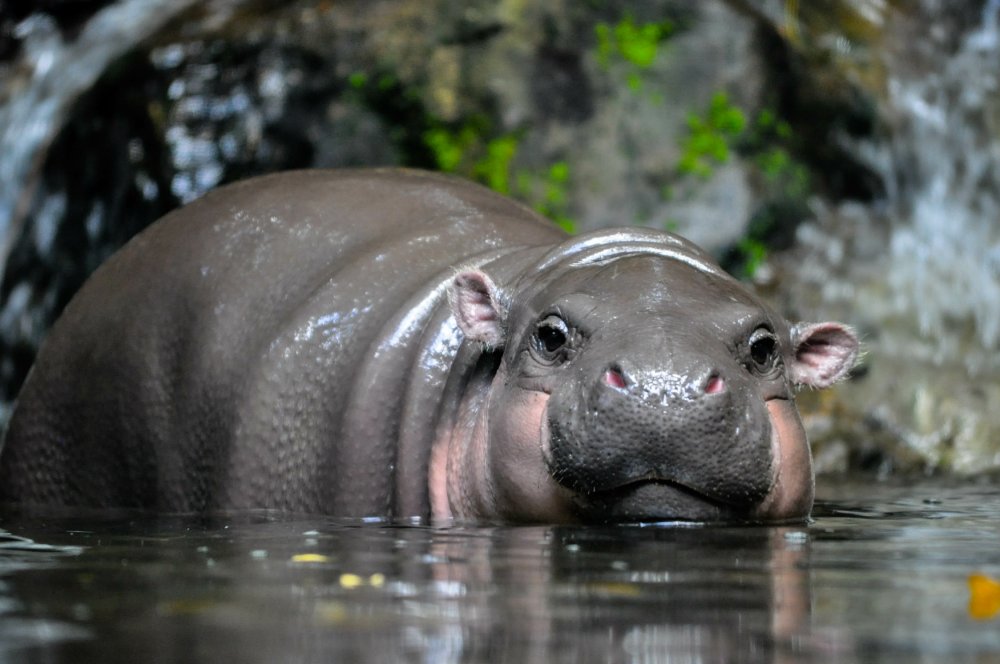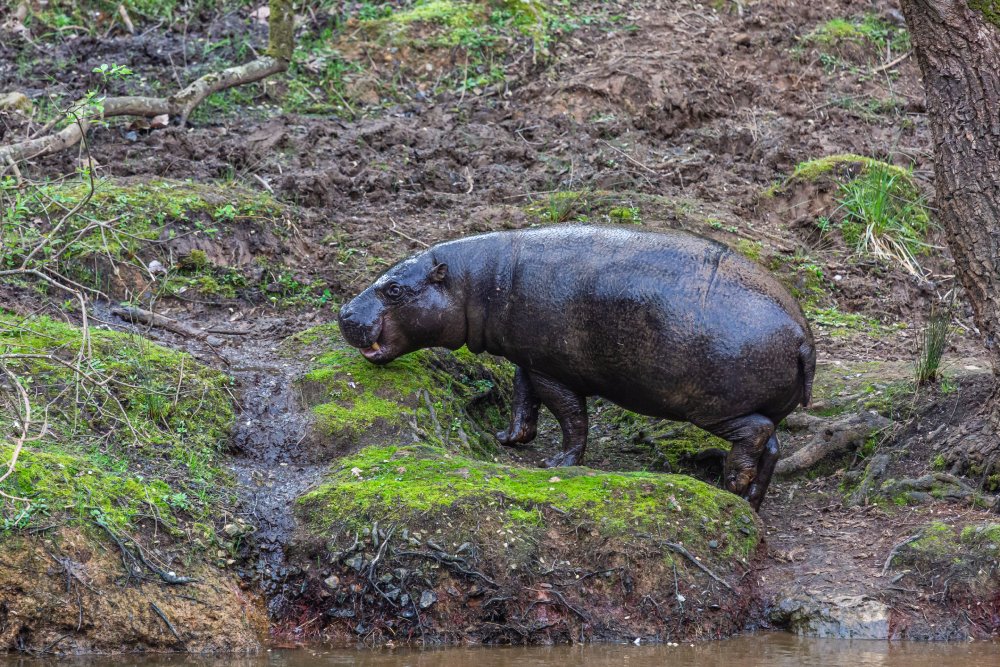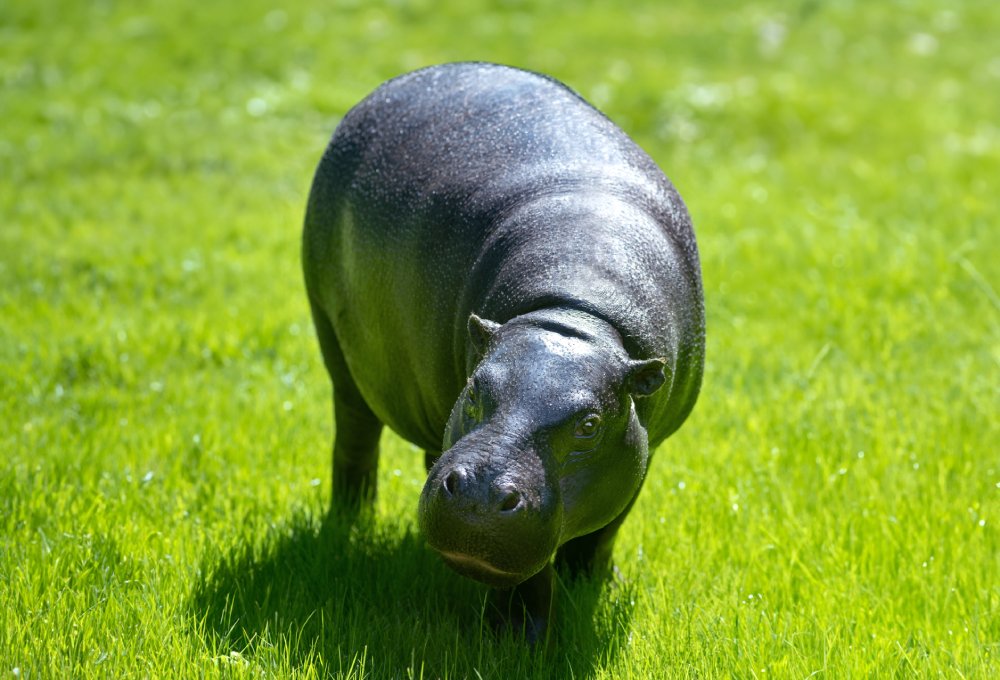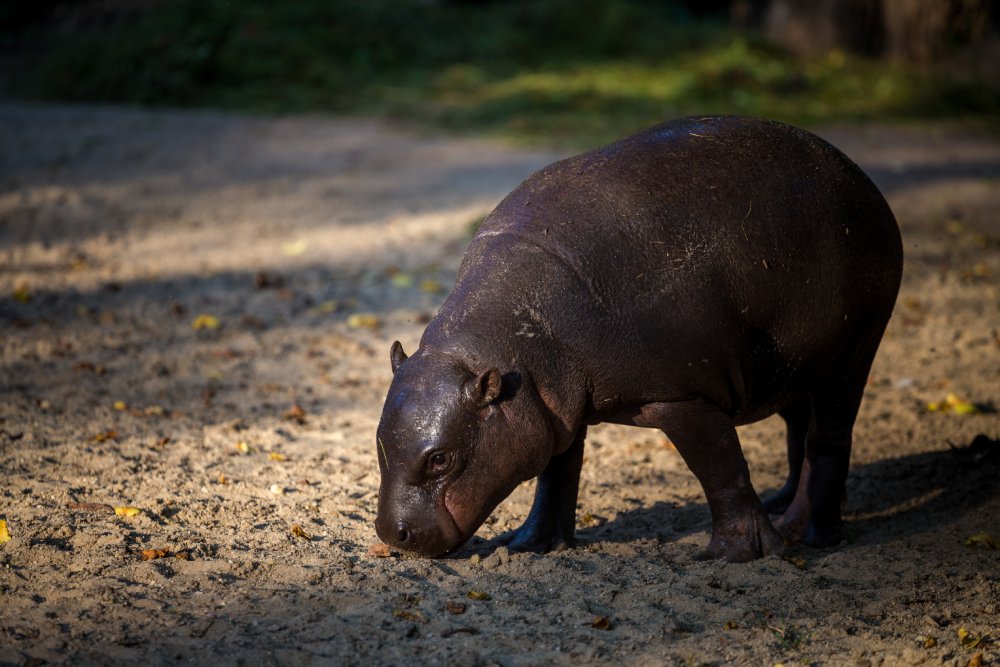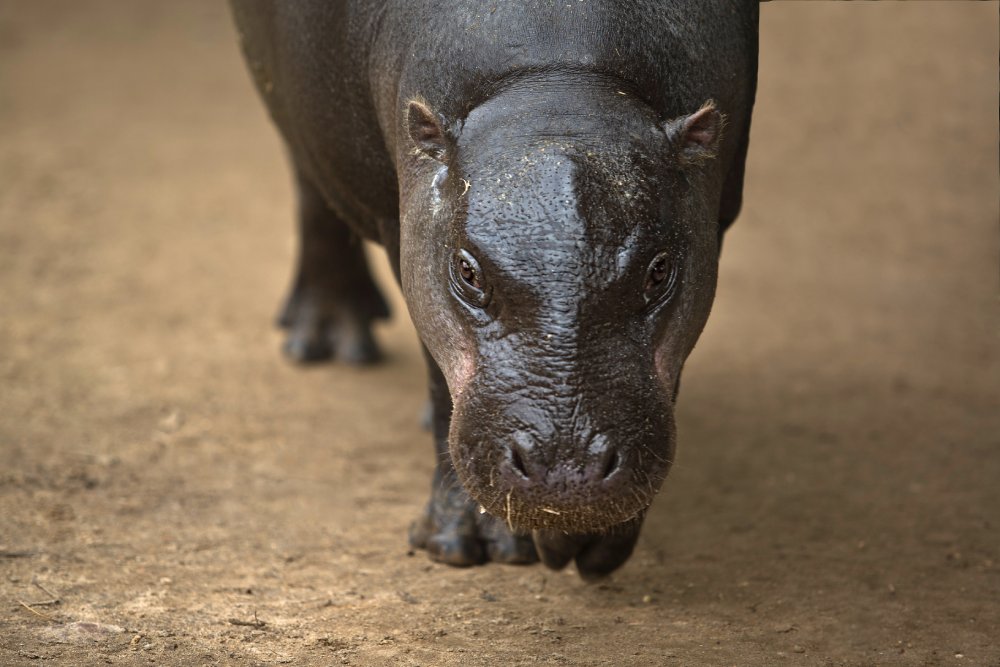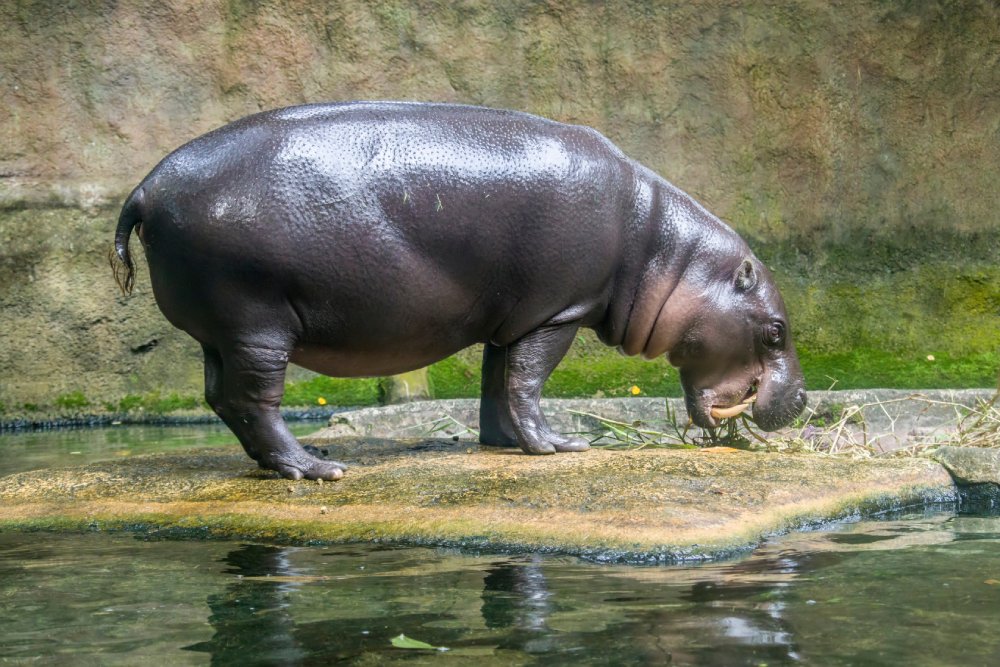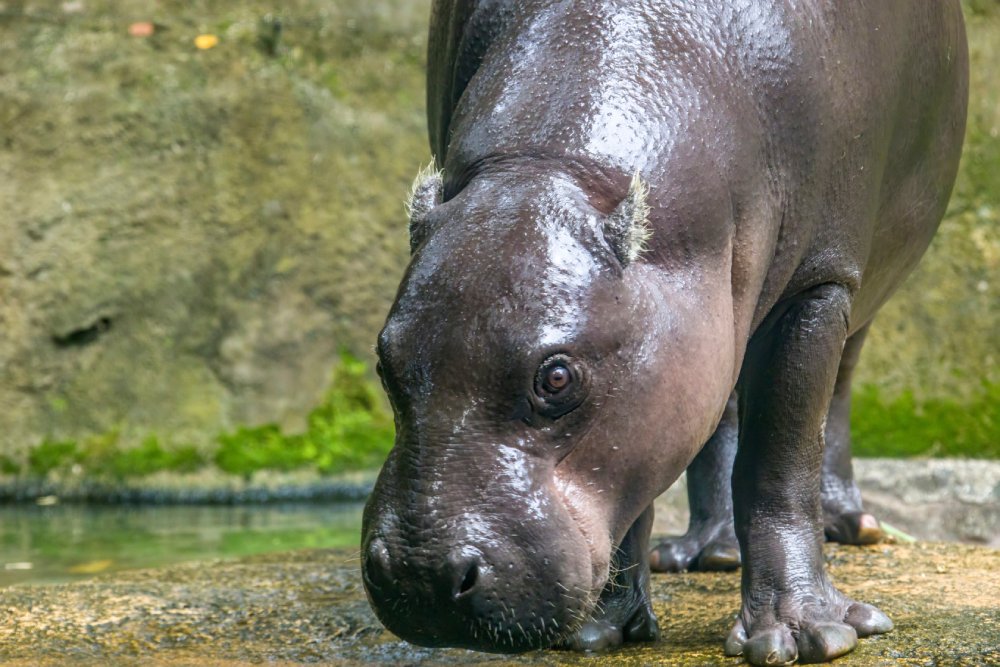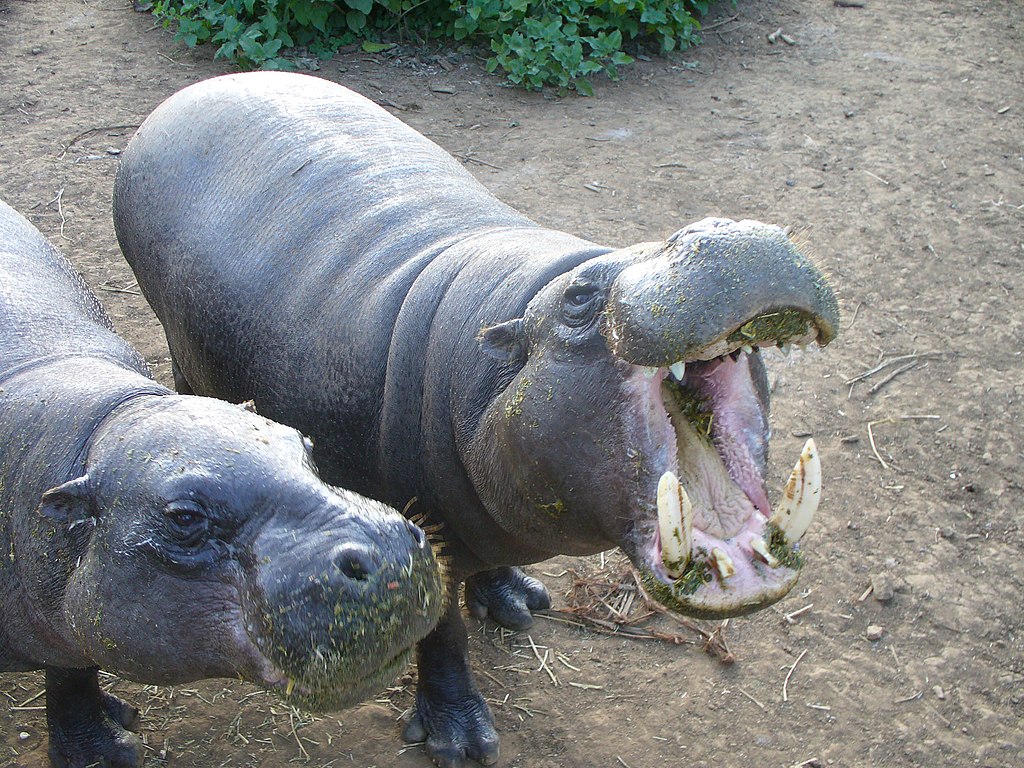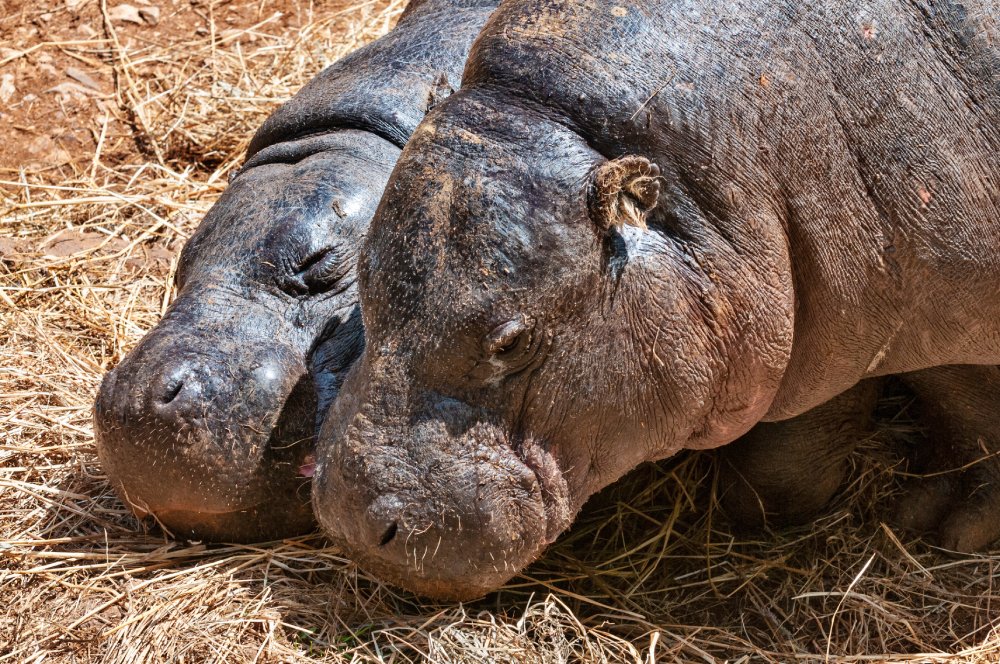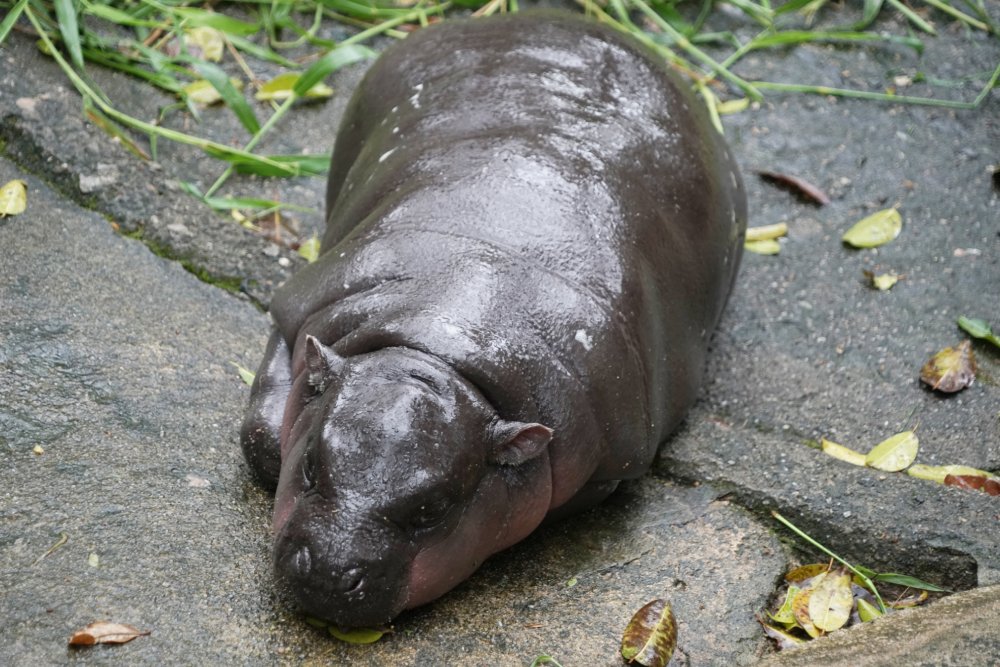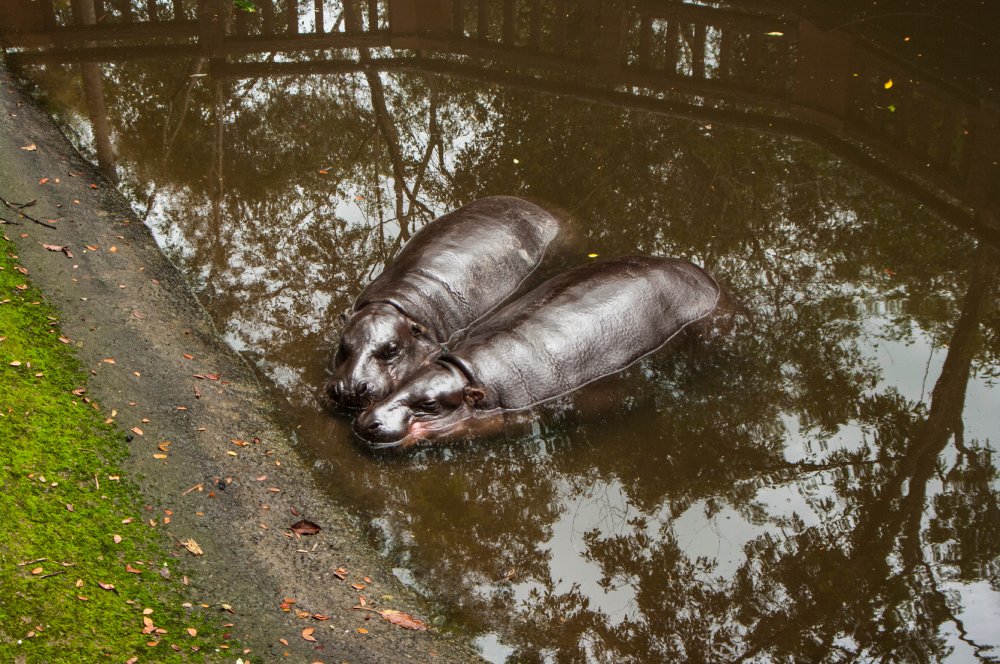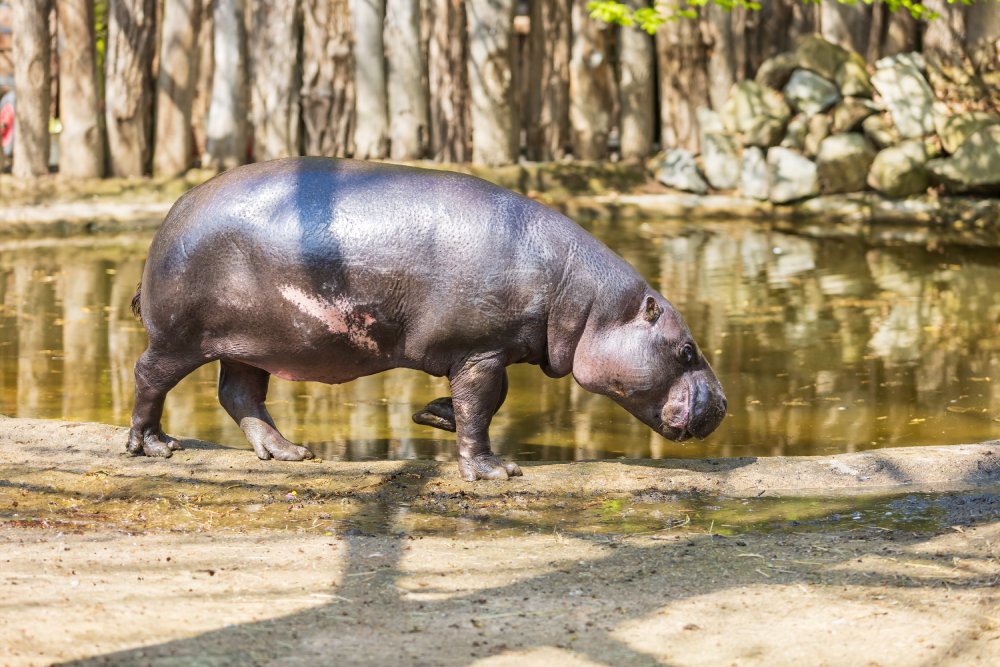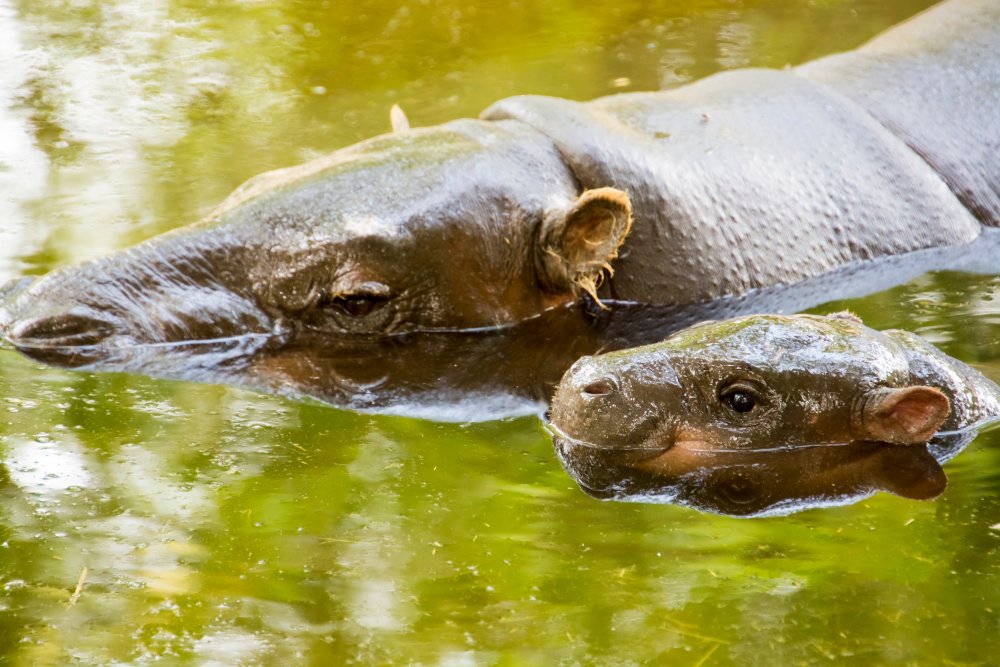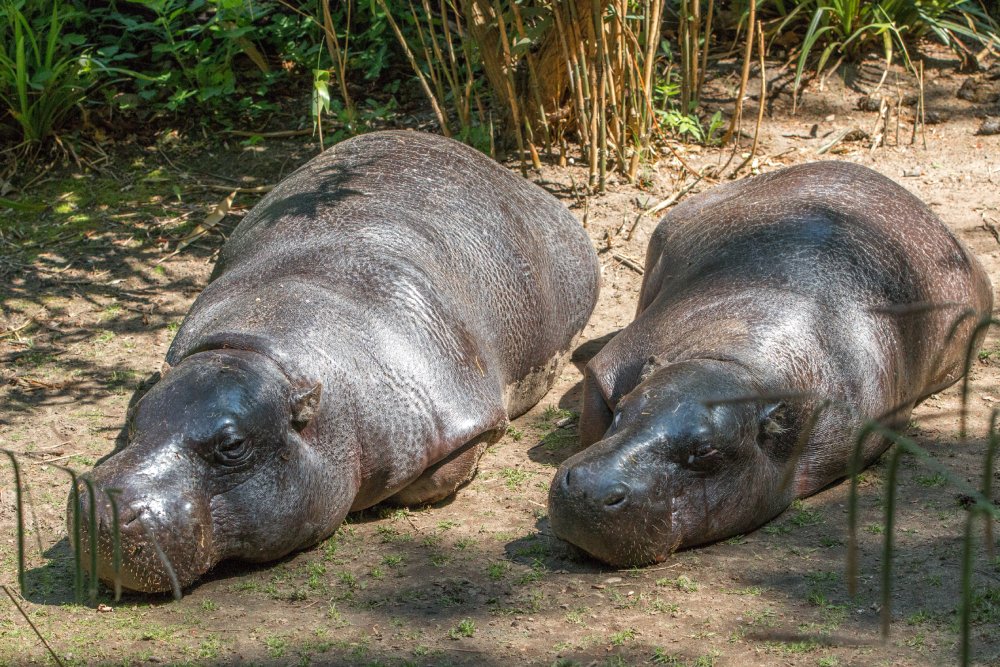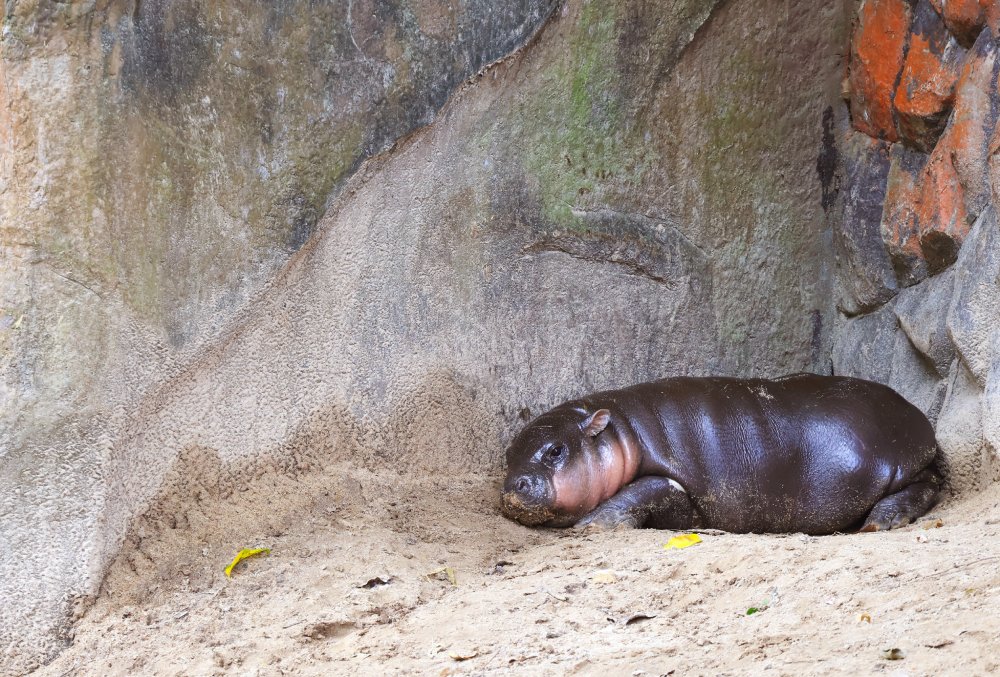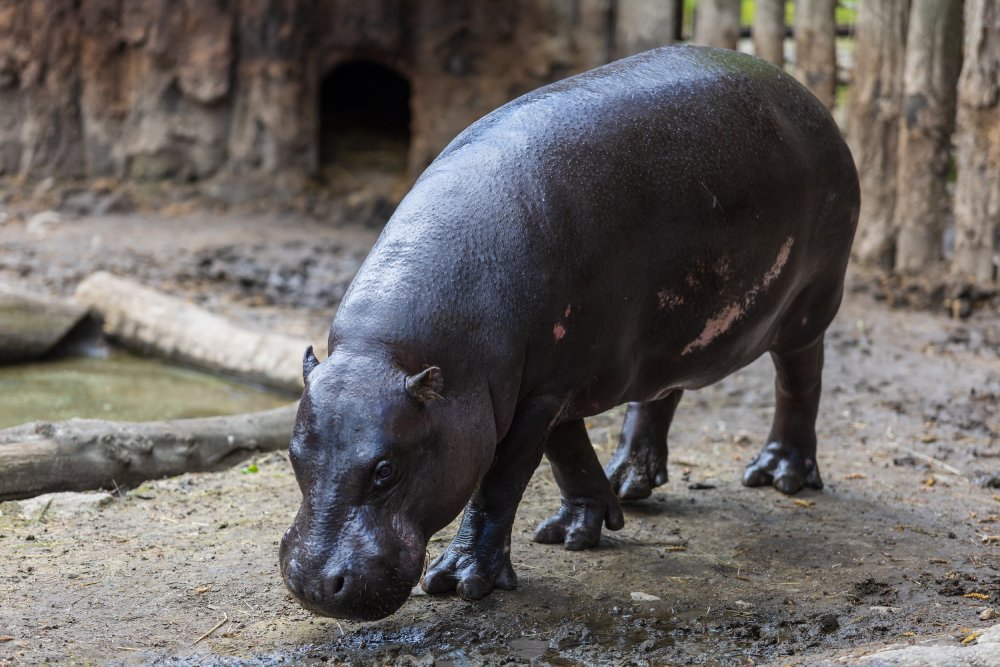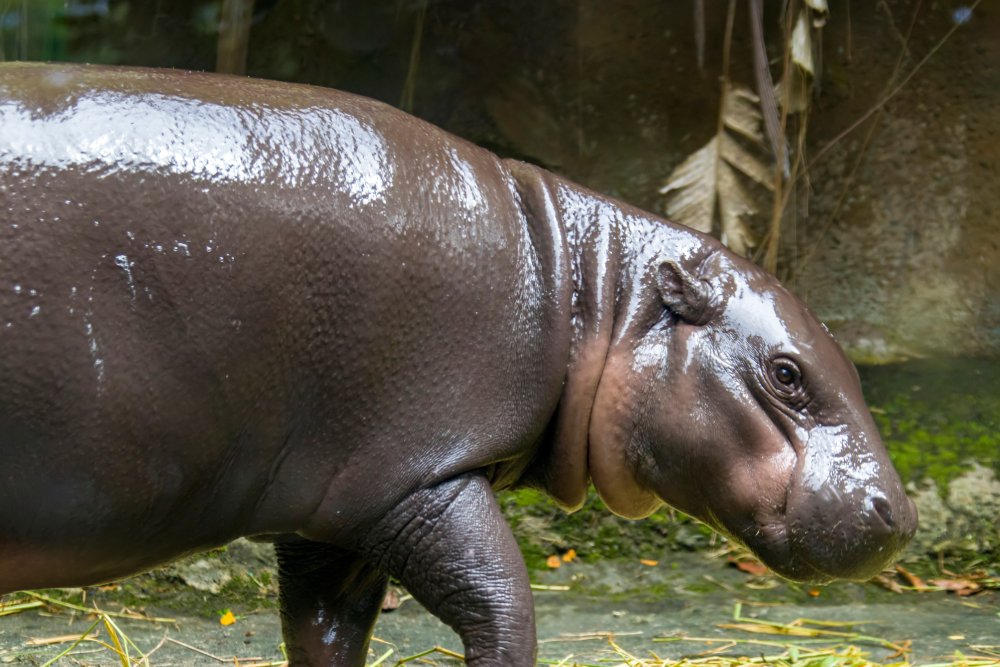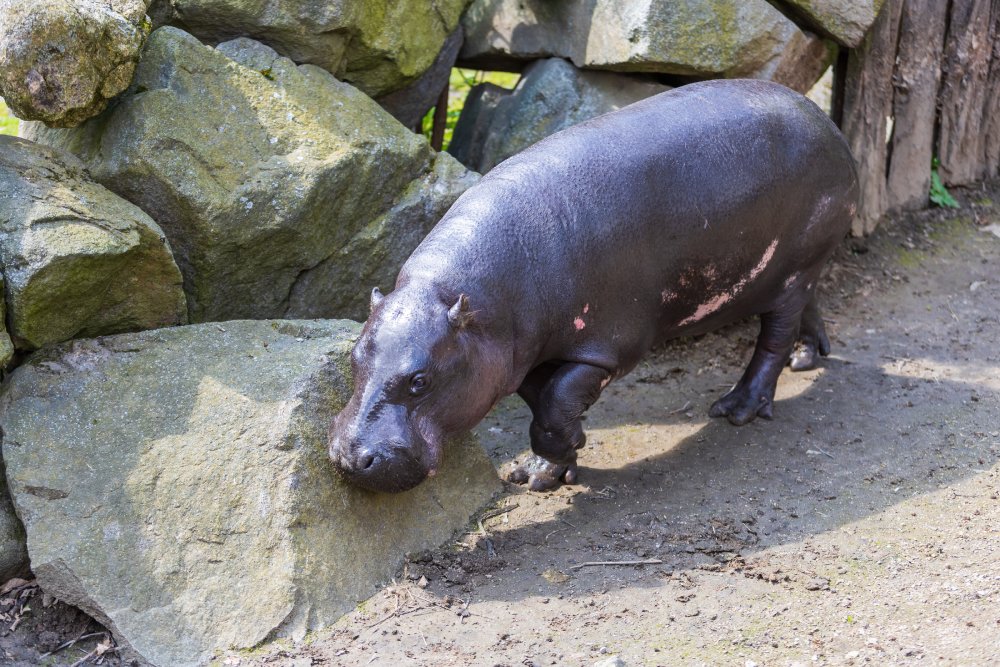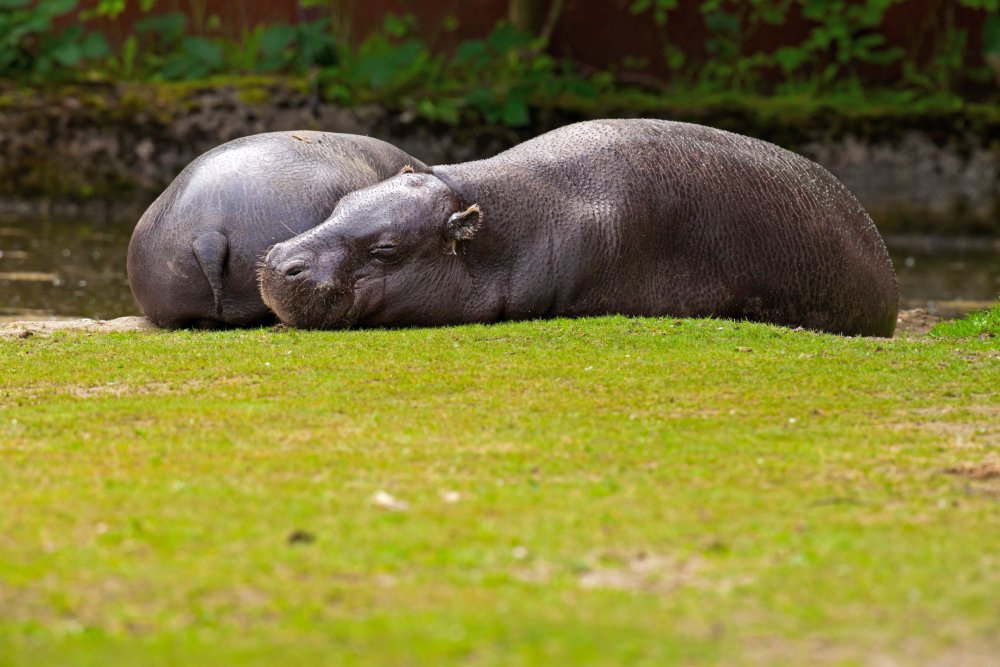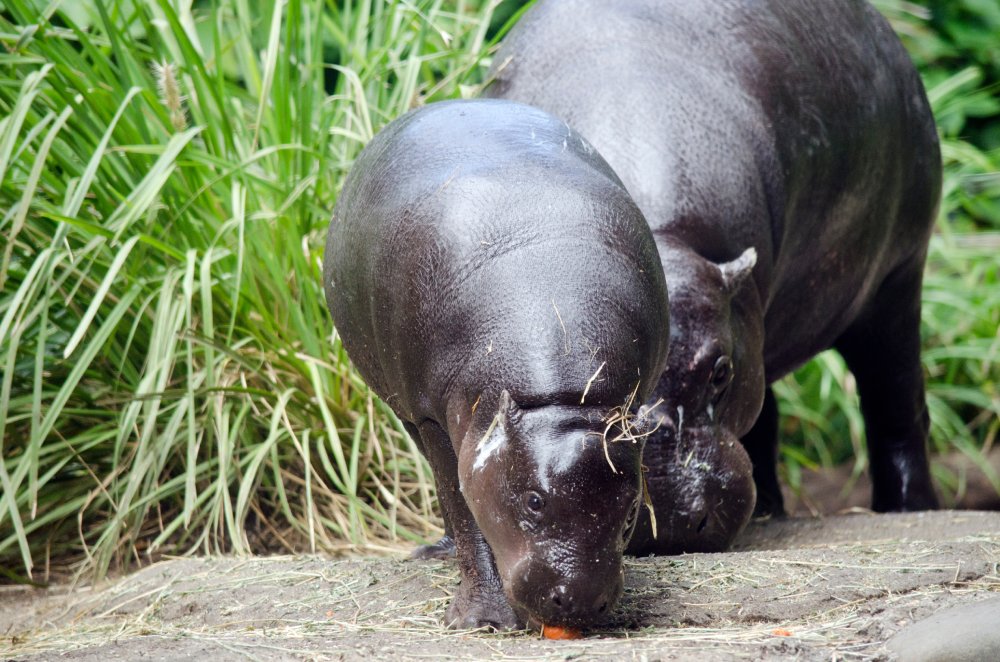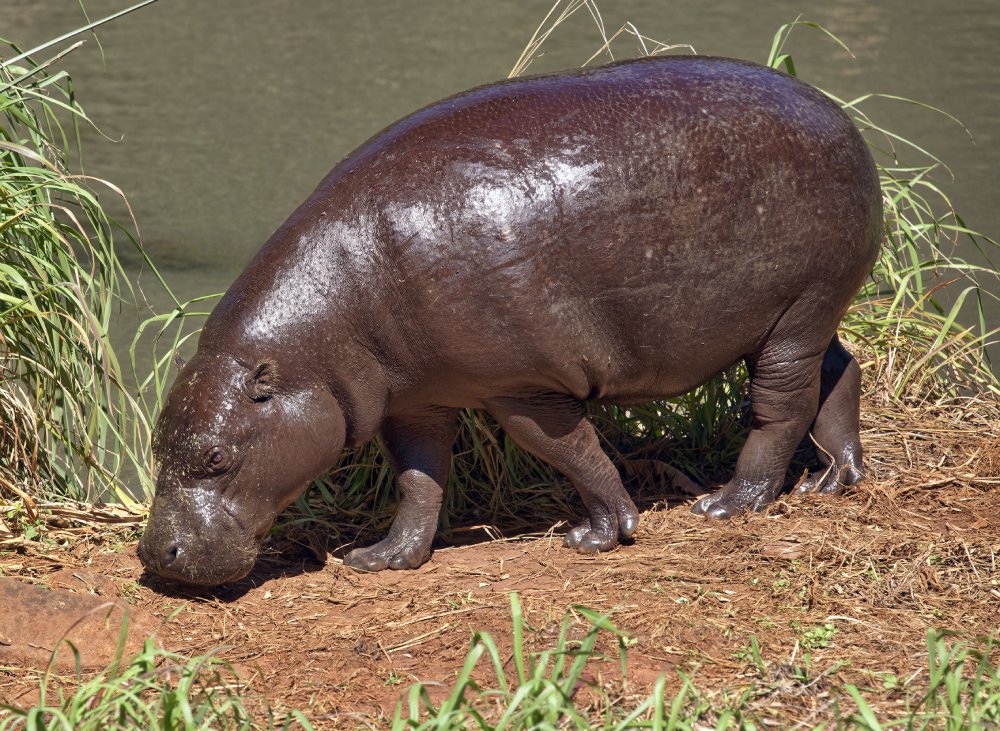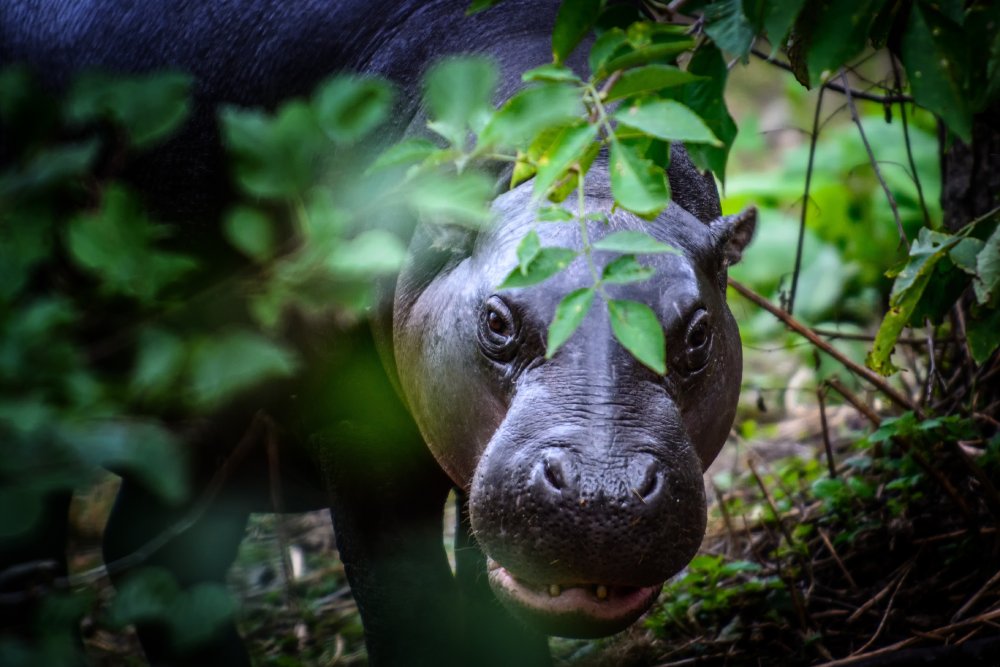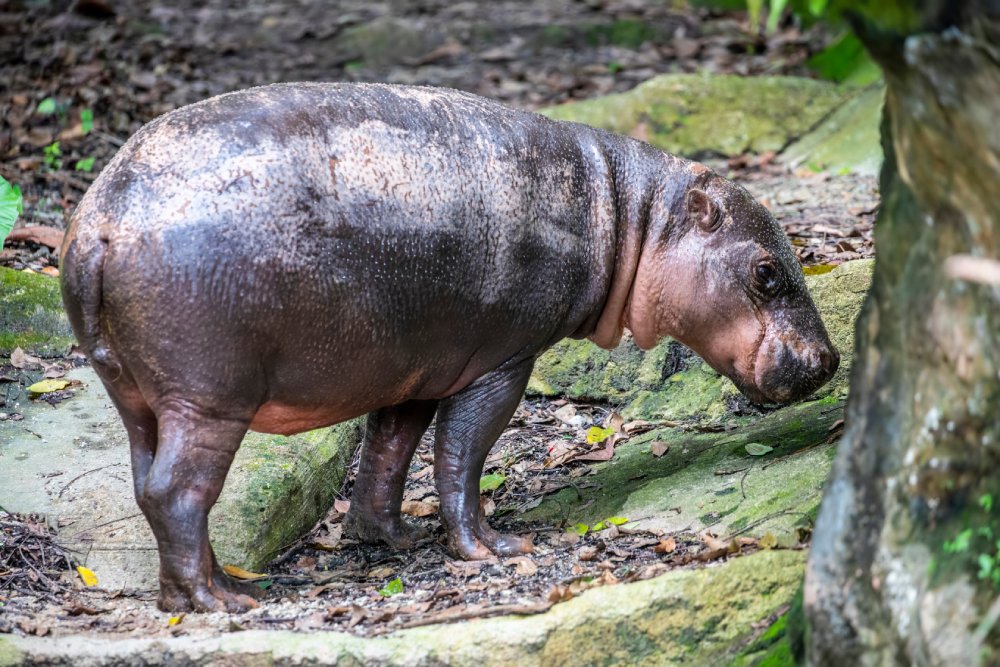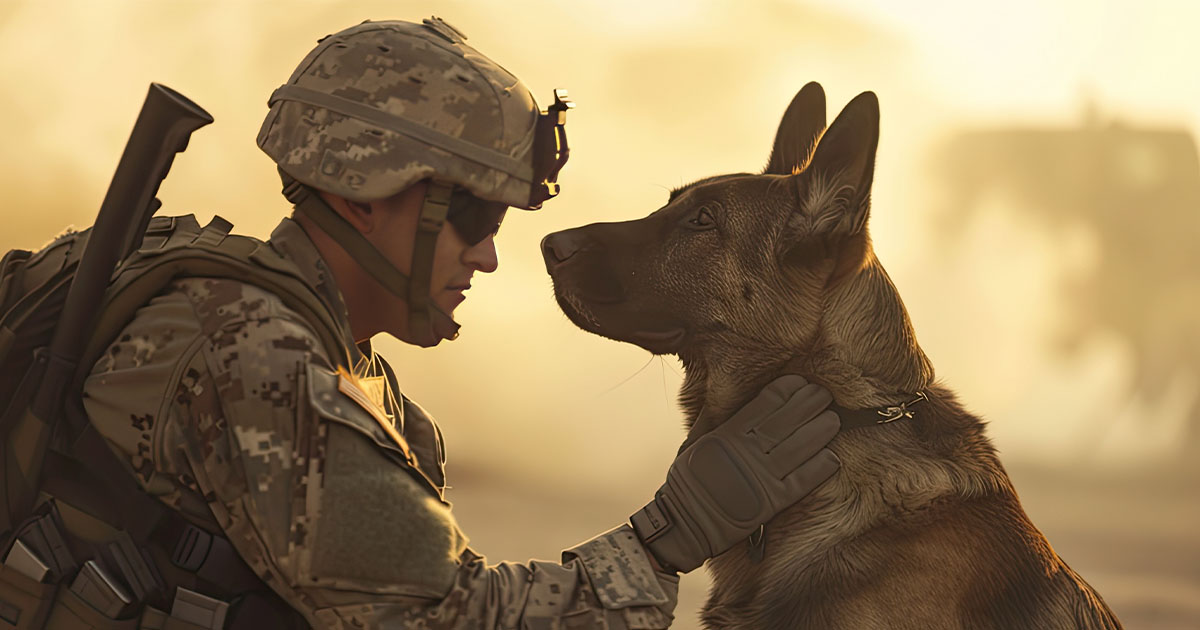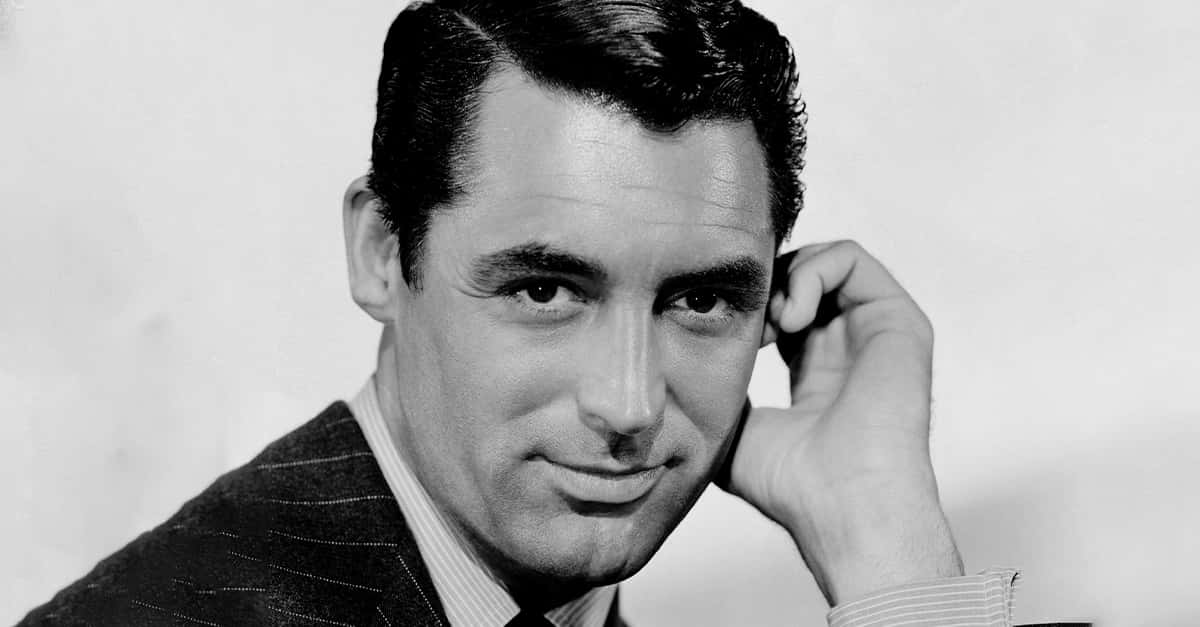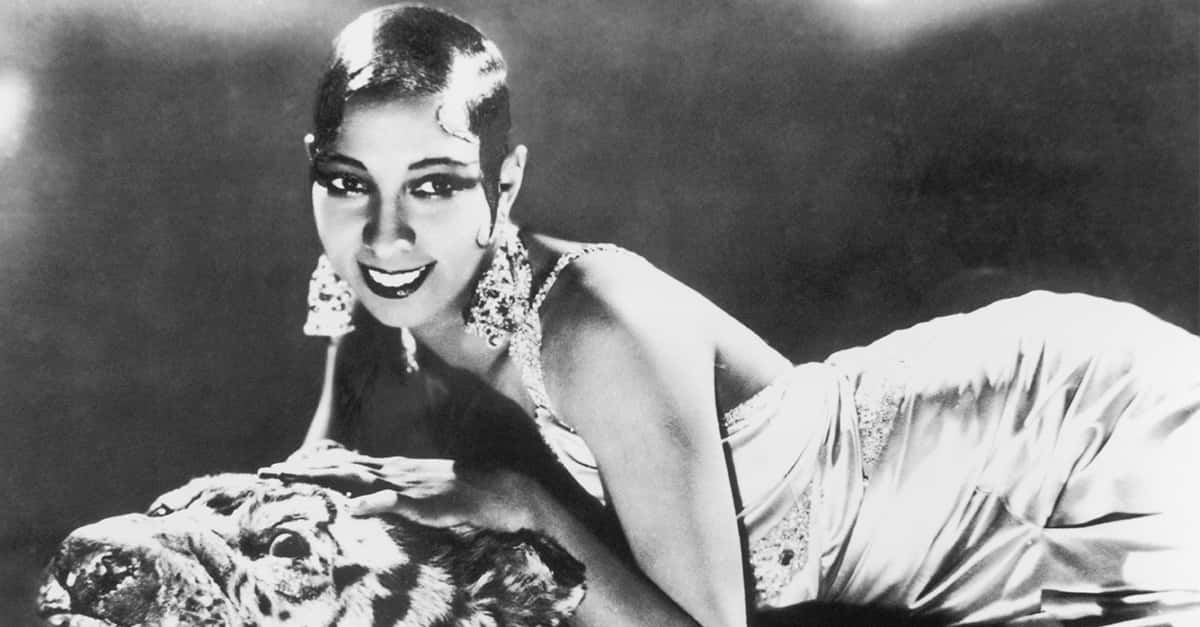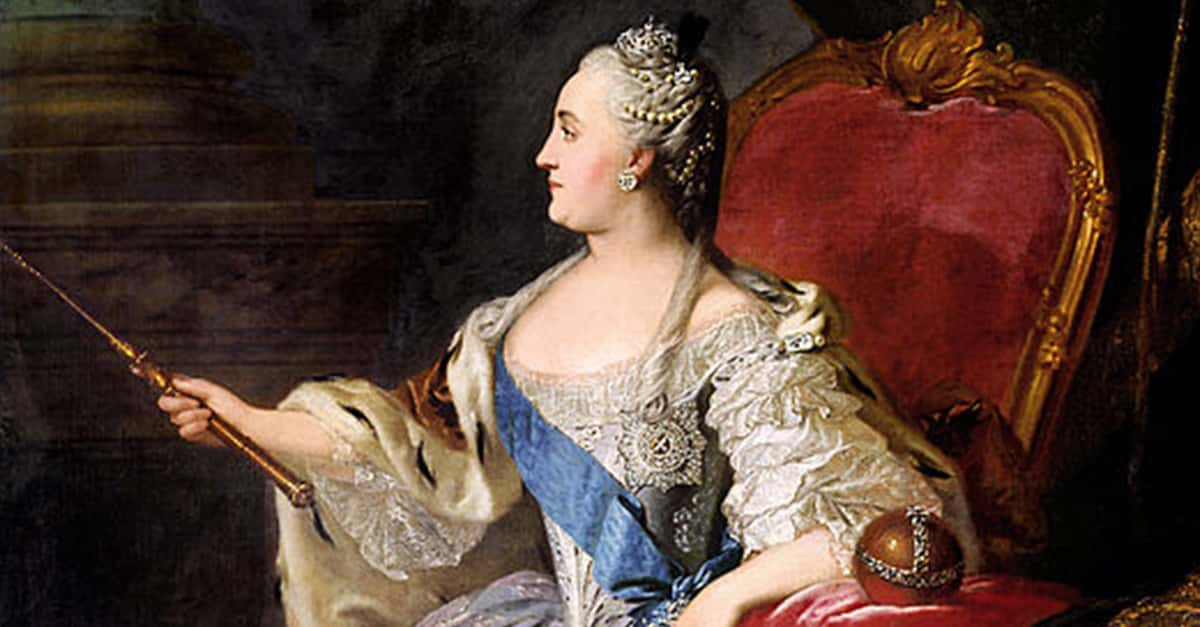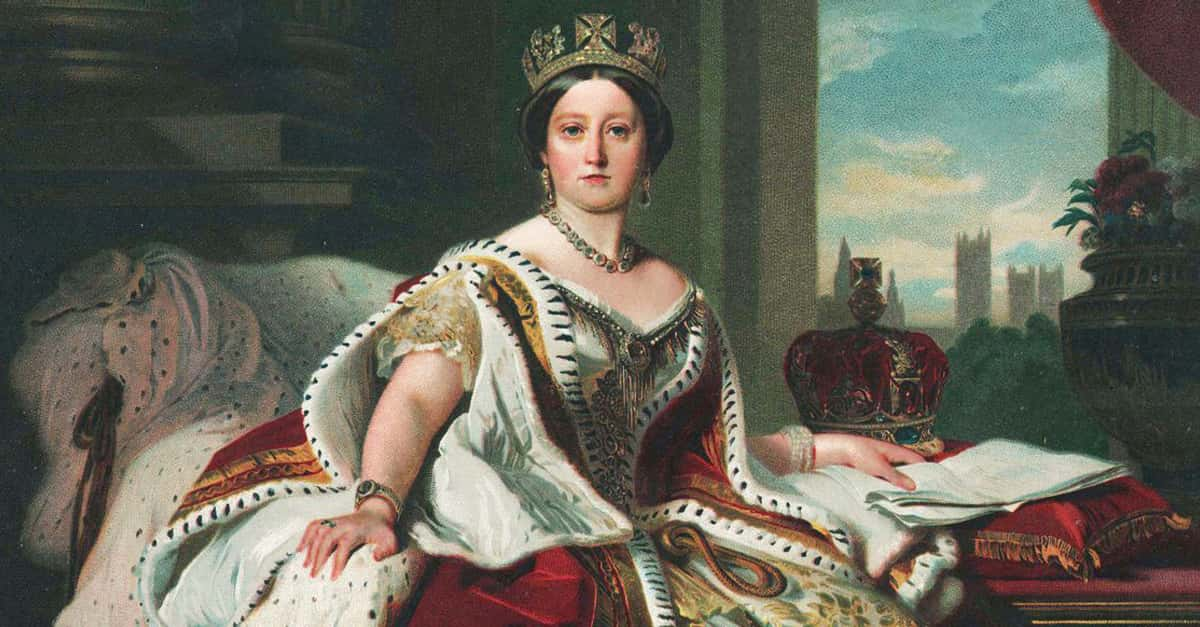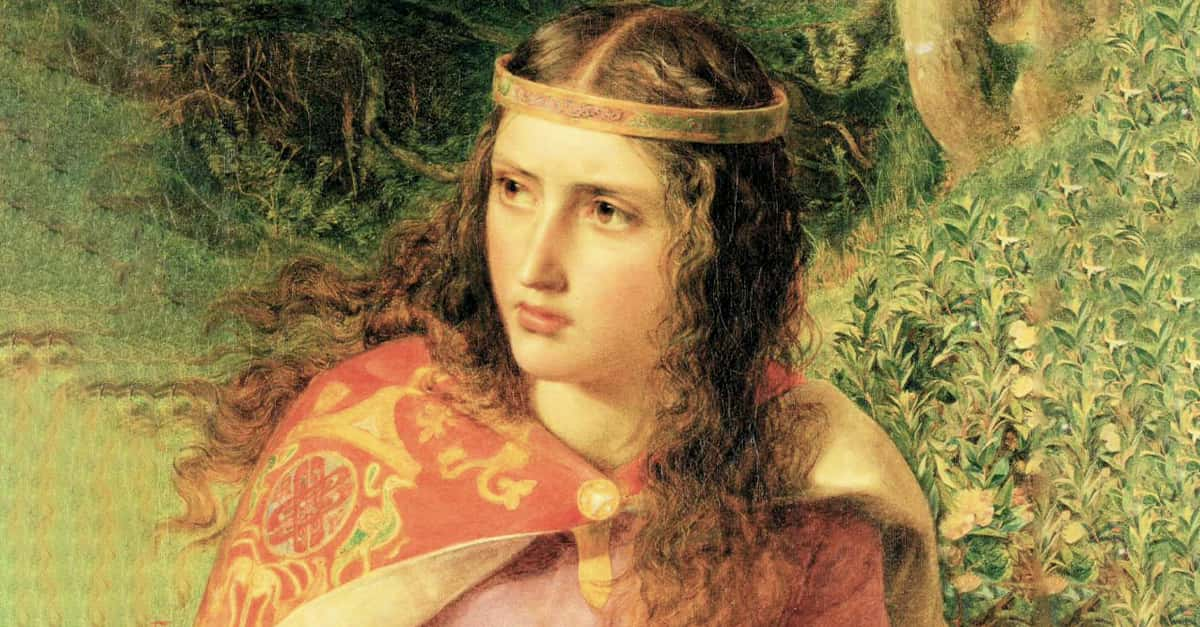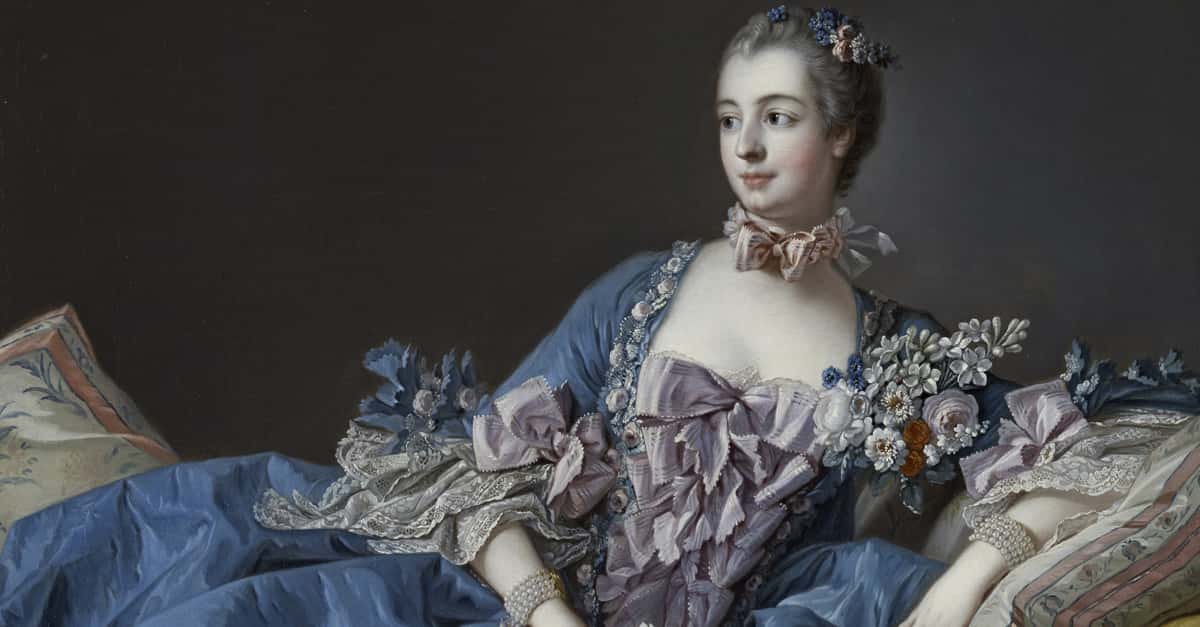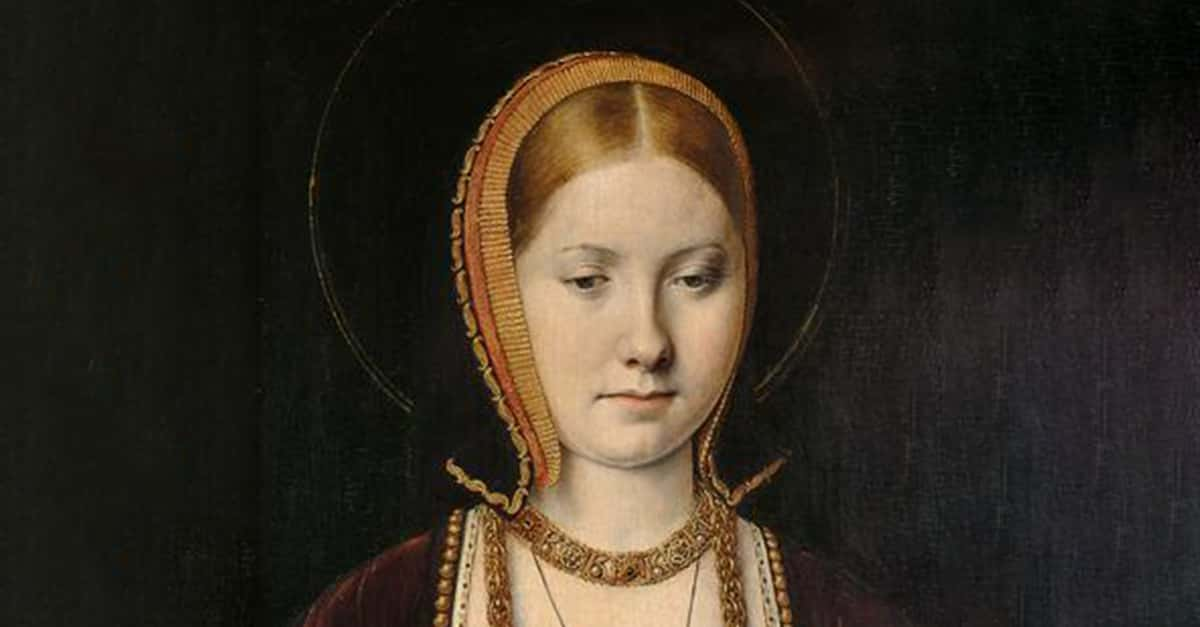The World's First Pygmy Hippopotamus Superstar
Moo Deng became an internet sensation when she was just two months old. The sassy pygmy hippopotamus, born in a Thai zoo, has been featured in countless memes, advertising campaigns, a Saturday Night Live sketch, and a Google Doodle. But almost a full century before Moo Deng gained a cult following, Billy (also known as William Johnson Hippopotamus) became the world's first pygmy hippo superstar.
A Hippopotamus Star Is Born
It was likely in the early 1920s when a certain pygmy hippopotamus—destined for celebrity—was born in West Africa. Although his birth year can't be determined exactly, he reached young adulthood by 1927.
Solitary And Reclusive
Pygmy hippopotami are solitary, reclusive, nocturnal, and don't vocalize much. As a result, it's been difficult to find and observe them in the wild. In fact, pygmy hippopotami were unknown outside of West Africa until the 19th century.
Smaller Than Common Hippopotami
An adult pygmy hippo isn't "small" by any stretch of the imagination. The animals grow to about 600 pounds. Still, they are significantly smaller than common hippos, which can grow to almost 10,000 pounds. And their offspring are tiny when young. Their unusual size draws attention and makes them a natural curiosity.
Threatened By Habitat Loss
The loss of their natural habitat is the biggest factor contributing to the decline of the pygmy hippopotami population in the wild. That loss escalated in 1926 when Harvey Firestone—of the Firestone Tire and Rubber Company—negotiated a 99-year lease with the Liberian government for a 1 million-acre parcel of land.
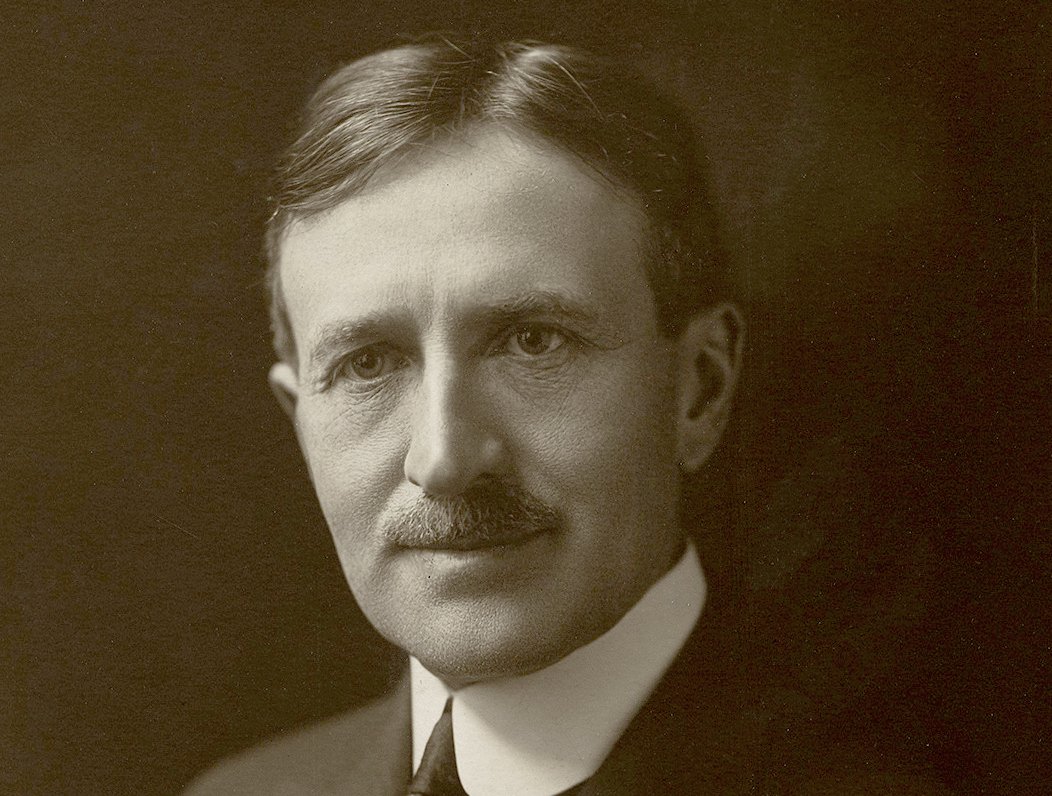 Underwood & Underwood, Wikimedia Commons
Underwood & Underwood, Wikimedia Commons
The Firestone Rubber Plantations
Harvey Firestone had been searching for a source of rubber outside of the British Empire. He found it in Liberia. The lease, which took two years to negotiate with the Liberian government, allowed Firestone to establish the largest rubber plantation in the world.
 Fred P. M. van der Kraaij, CC BY-SA 4.0, Wikimedia Commons
Fred P. M. van der Kraaij, CC BY-SA 4.0, Wikimedia Commons
Pygmy Hippo Captured On A Plantation
The Firestone plantation encroached on the natural habitat of several species. Despite their instinct to evade other creatures (including humans), the pygmy hippopotamus destined for fame was captured on that plantation in 1927.
He Was Named Billy
Harvey Firestone claimed the pygmy hippo as his property and named him "Billy". Firestone did not intend to keep Billy but had big plans for him.
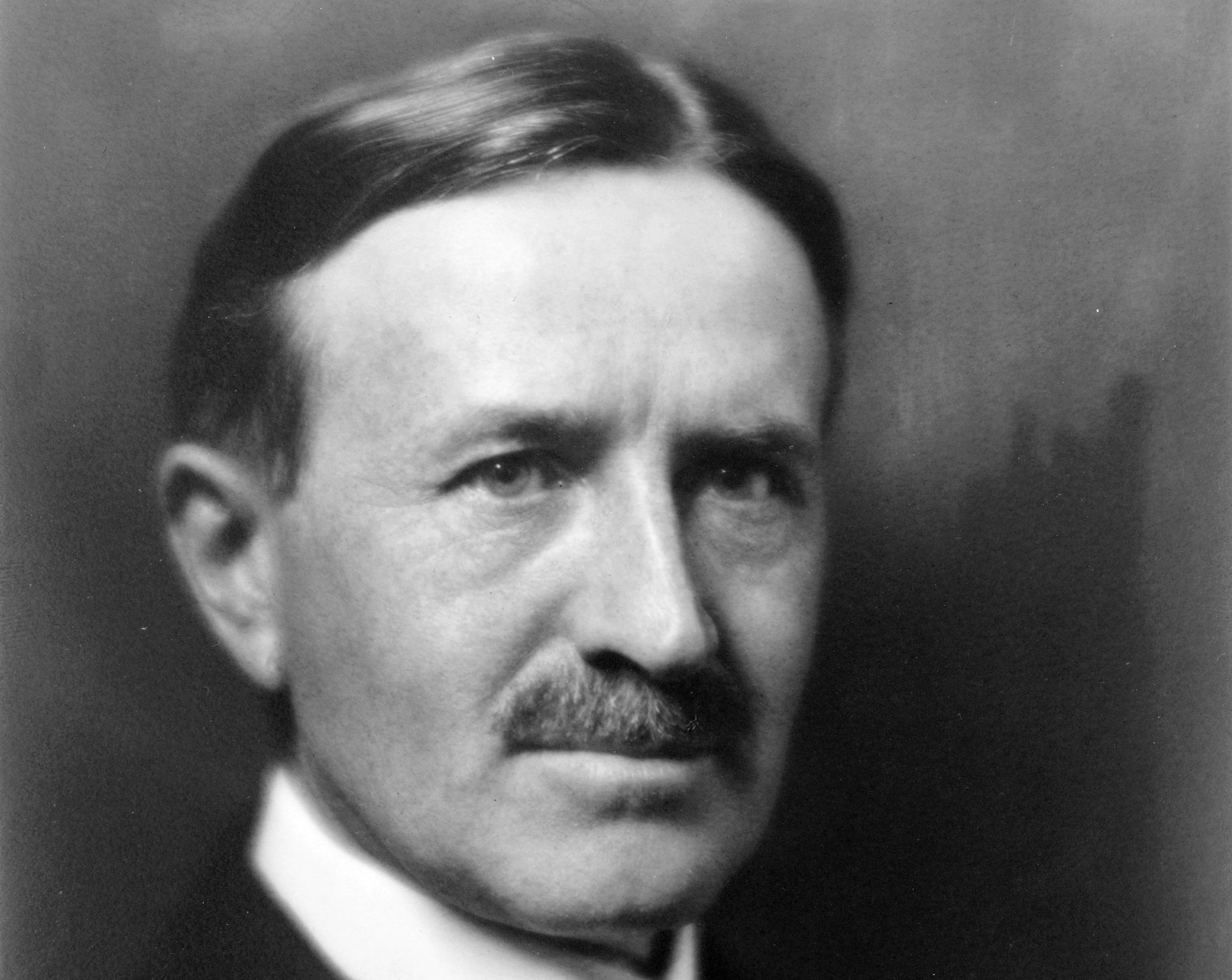 Pirie MacDonald, Wikimedia Commons
Pirie MacDonald, Wikimedia Commons
A Gift For US President Calvin Coolidge
President Calvin Coolidge and his wife Grace were animal lovers. Even before Billy arrived, the Coolidges' menagerie in the White House included dogs, cats, birds, a wallaby, a donkey, lion cubs, and a raccoon, among other animals. But adding a hippo to the mix—even a pygmy hippo—just wasn't tenable.
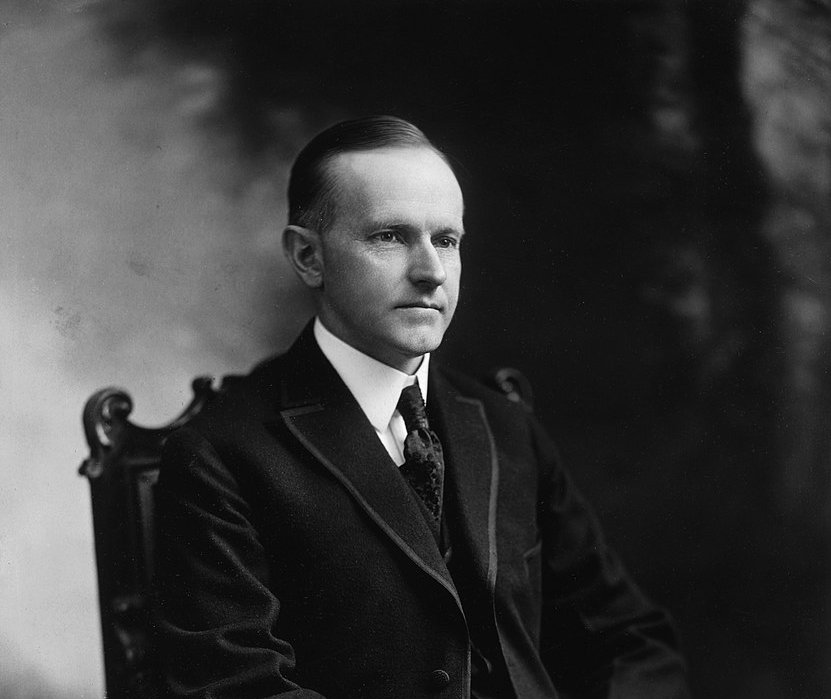 Pirie MacDonald, Wikimedia Commons
Pirie MacDonald, Wikimedia Commons

History's most fascinating stories and darkest secrets, delivered to your inbox daily.
He Never Called The White House Home
When he arrived in the United States, Billy was fully grown. He was about six feet long and weighed approximately 600 pounds. Coolidge donated Billy to the National Zoo in Washington, DC.
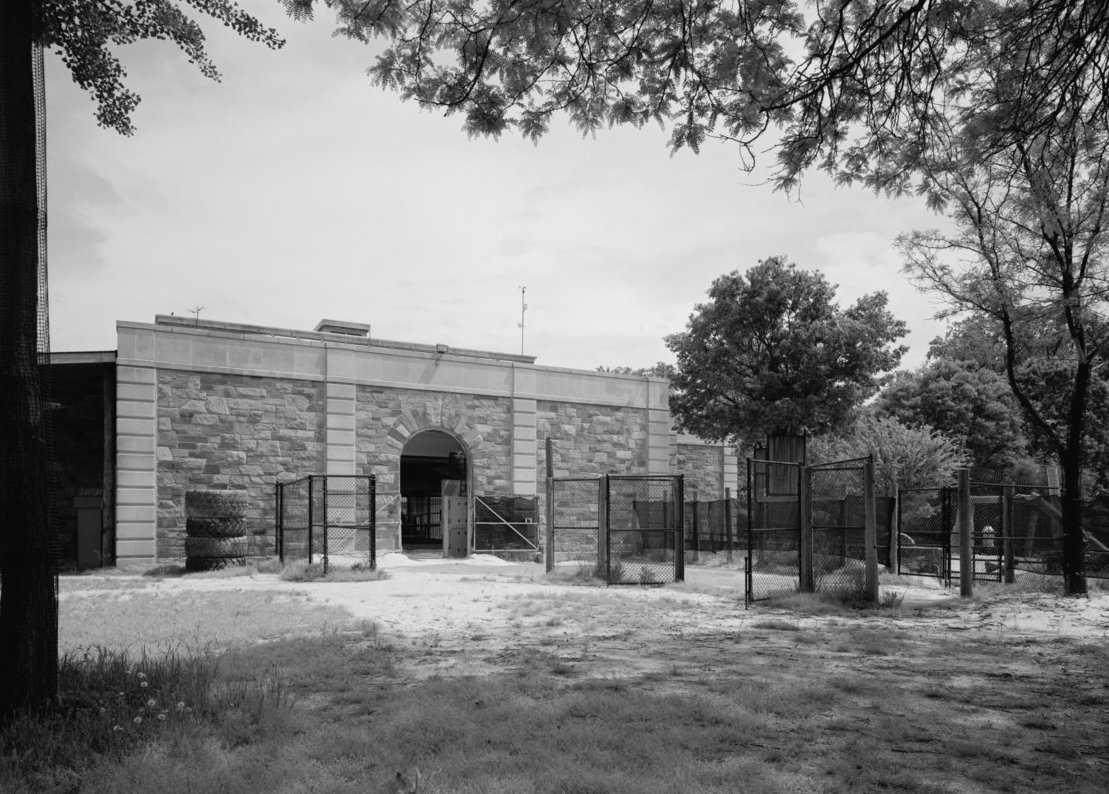 Rosenthal, James W., Wikimedia Commons
Rosenthal, James W., Wikimedia Commons
Billy Got A Fancier Name
The origins remain unclear but at some point, people began referring to Billy as "William Johnson Hippopotamus". The name stuck.
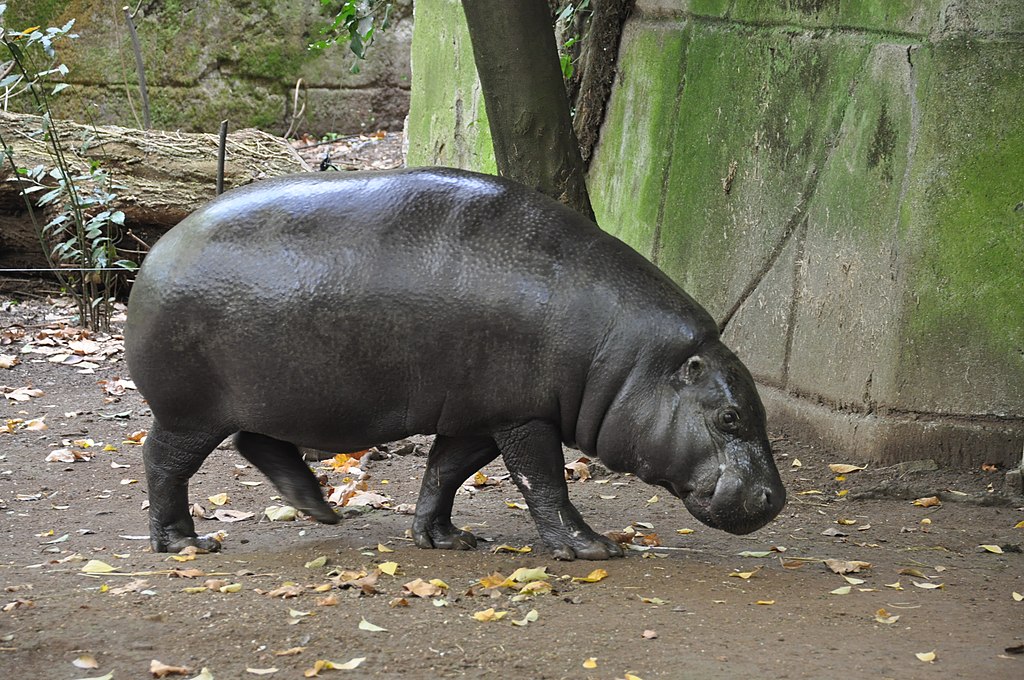 zooinstitutes.com, CC BY-SA 4.0, Wikimedia Commons
zooinstitutes.com, CC BY-SA 4.0, Wikimedia Commons
Eighth Pygmy Hippo In The United States
Pygmy hippopotami are rare and difficult to find in the wild. As a result, only seven pygmy hippos had been captured and sent to the United States before Billy's arrival.
Billy Loved Living At The Zoo
Since American zookeepers had so little experience caring for pygmy hippopotami, Billy's caretakers didn't understand how to take good care of him. Nevertheless, Billy thrived at the National Zoo.
Billy Enjoyed Playing With His Zookeepers
Billy loved life at the zoo so much that he was often playful with the zookeepers. The New York Times reported that Billy was as frisky as a dog and, "Even the antics of the monkeys go unobserved when the keeper opens the tiny hippo’s cage and cuts up with him”.
Americans Loved Billy
The American public was curious about Billy because pygmy hippopotami were so rare. And, his personality quickly endeared him to zoo visitors. Americans flocked to the National Zoo to see the small, sassy hippo.
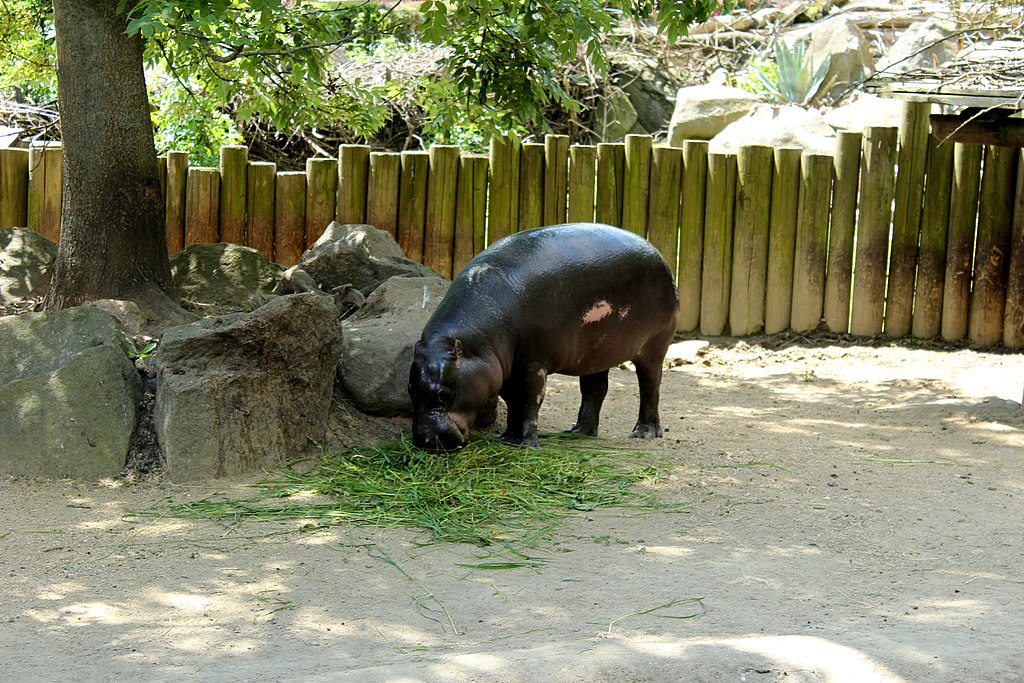 Atillak, CC BY-SA 3.0, Wikimedia Commons
Atillak, CC BY-SA 3.0, Wikimedia Commons
Billy Was Destined For Fatherhood
Billy's zookeepers were keen to capitalize on his personality and popularity. They decided to find Billy a mate—hopefully leading to progeny.
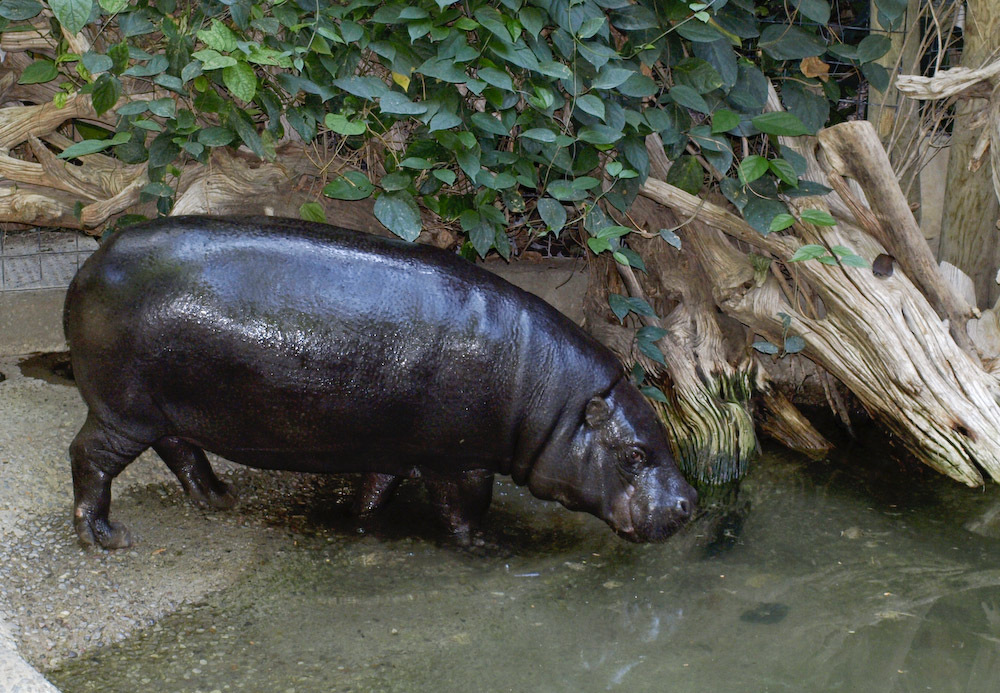 Randolph Croft, CC BY 2.0, Wikimedia Commons
Randolph Croft, CC BY 2.0, Wikimedia Commons
Pygmy Hippopotami Husbandry Was A Complete Unknown
Until the National Zoo decided to find a mate for Billy, American zoos typically housed only one specimen of any animal and exhibited it until it died. Zookeepers weren't well educated about animal husbandry in general. But because pygmy hippopotami were so rare in captivity, knowledge about their reproduction was especially sparse.
When Billy Met Hannah
Despite the zoo's inexperience with animal husbandry, it acquired a female pygmy hippo in September 1929. Named Hannah, she and Billy were placed in the same enclosure as the lions at the zoo.
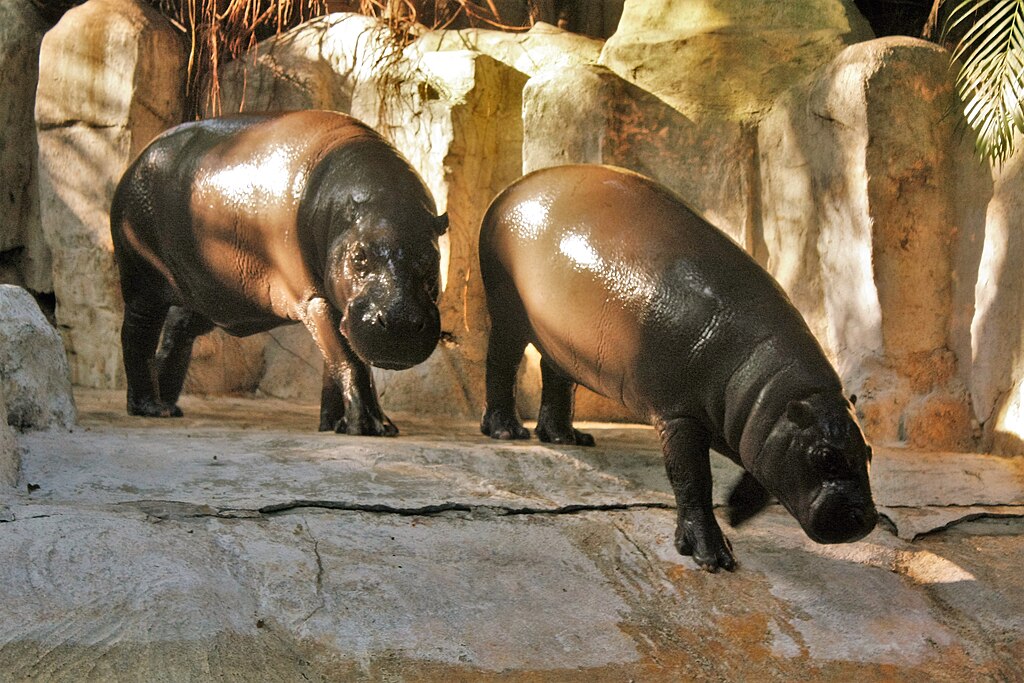 J. Patrick Fischer, CC BY-SA 4.0, Wikimedia Commons
J. Patrick Fischer, CC BY-SA 4.0, Wikimedia Commons
Meet The Parents
The gestation period for pygmy hippos is typically 190-210 days (seven months, at most). However, Billy and Hannah welcomed their first calf on August 26, 1931—almost exactly two years after Hannah's arrival.
Their First Calf Did Not Survive
Sadly, their first calf lived for less than a week. Hannah's nurturing skills were blamed. The Washington Post reported that the calf's demise was due to its "inability to survive the neglect of an errant mother".
Was Hannah A Bad Mother?
Over the next two years, Hannah gave birth to two more of Billy's calves. Neither one survived past infancy. A third calf was lost when Hannah rolled over and crushed it. The National Zoo's director, William M Mann, told The Washington Post that Hannah was "just a bad mother".
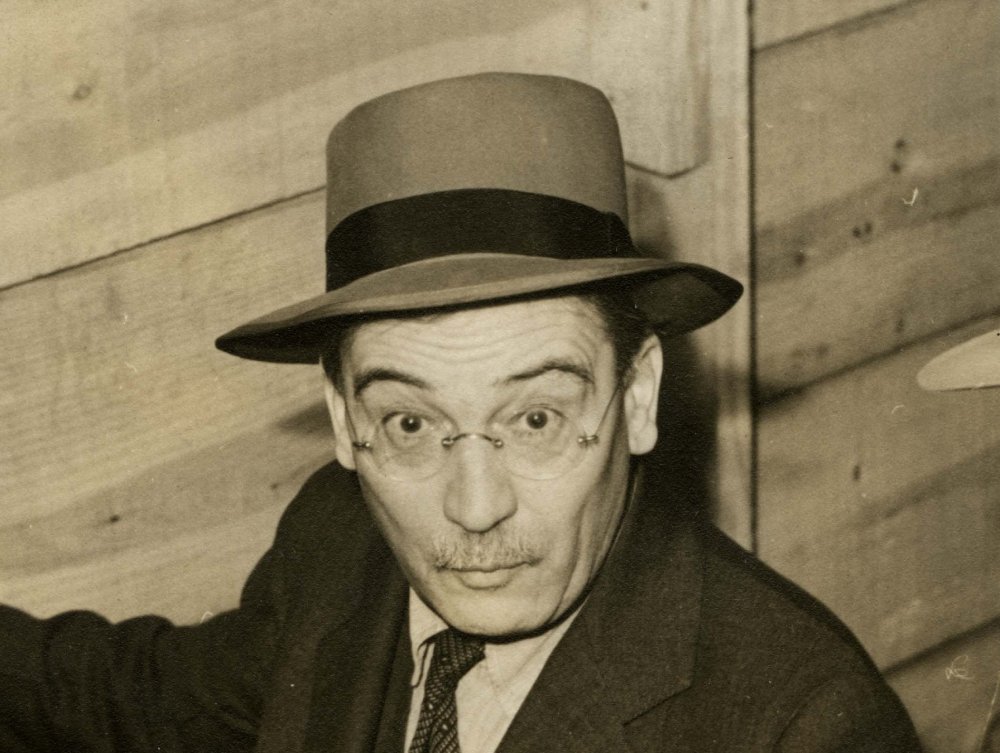 Smithsonian Institution, Wikimedia Commons
Smithsonian Institution, Wikimedia Commons
New Quarters At The Zoo
In 1937, the Pachyderm House was constructed at the zoo. Billy and Hannah moved in. Previously housed with the lions, the pygmy hippo couple now had separate, safer, quarters.
Pregnancy Number Four
In late 1937, Hannah became pregnant for the fourth time. As her pregnancy progressed, her keepers noticed that she was more at ease and less agitated than during her previous pregnancies.
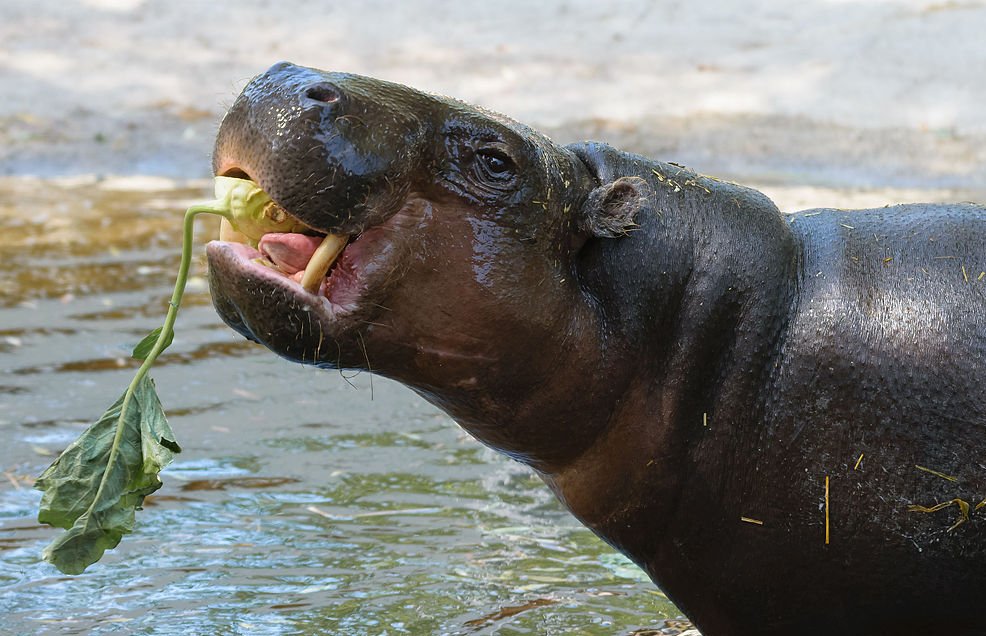 Magnus Johansson, CC BY-SA 2.0, Wikimedia Commons
Magnus Johansson, CC BY-SA 2.0, Wikimedia Commons
Hannah Wasn't A Bad Mother After All
During Hannah's fourth pregnancy, her keepers had an important realization. During her previous three pregnancies, it's likely Hannah had been terrified by the nearby lions, which affected her maternal instincts.
Welcome To The World, Baby Gumdrop!
On Mother's Day, 1938, Hannah and Billy welcomed their fourth offspring. This baby pygmy hippo was named “Gumdrop”. The name was reportedly suggested by a child who mentioned that the baby looked like a big licorice gumdrop.
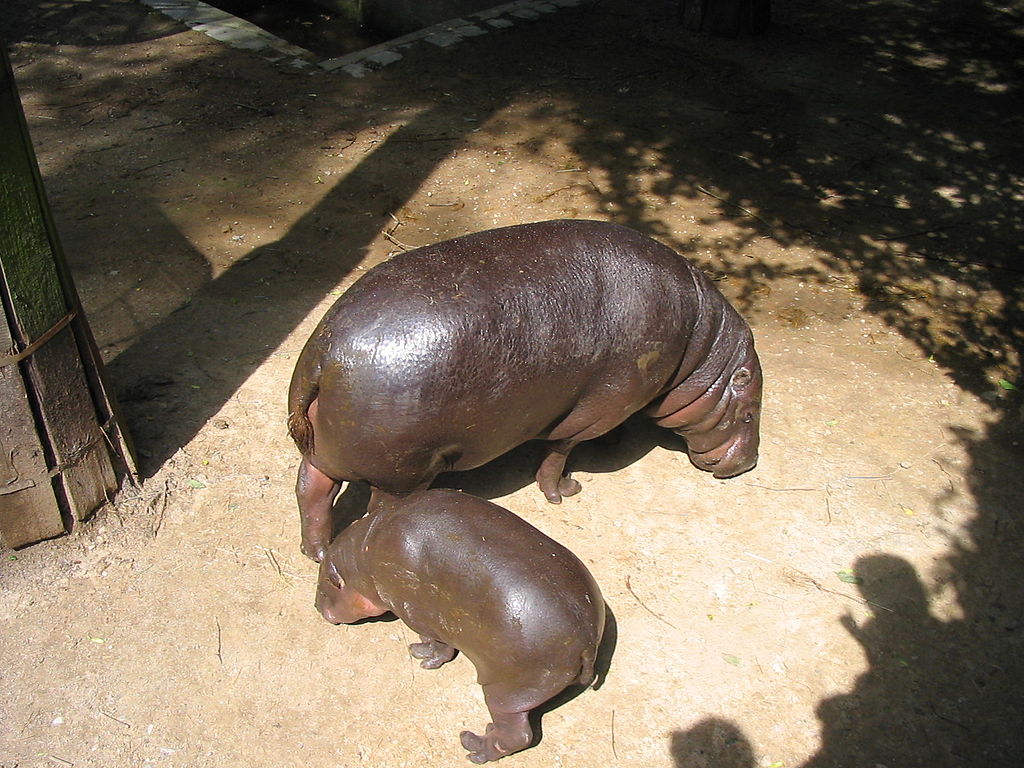 Jirka82, CC BY-SA 3.0, Wikimedia Commons
Jirka82, CC BY-SA 3.0, Wikimedia Commons
Gumdrop Was The First Of A Dynasty
All of Billy's offspring were named Gumdrop, with Roman numerals tacked on to differentiate between them. Hannah gave birth to 15 of Billy's calves. Seven survived for at least one year.
Billy's Progeny Were Lucrative
Once the Gumdrops reached maturity, most were sold or traded to other zoos in exchange for yaks, exotic cockatoos, and other species. This was so lucrative that the zoo decided to acquire another mate for Billy.
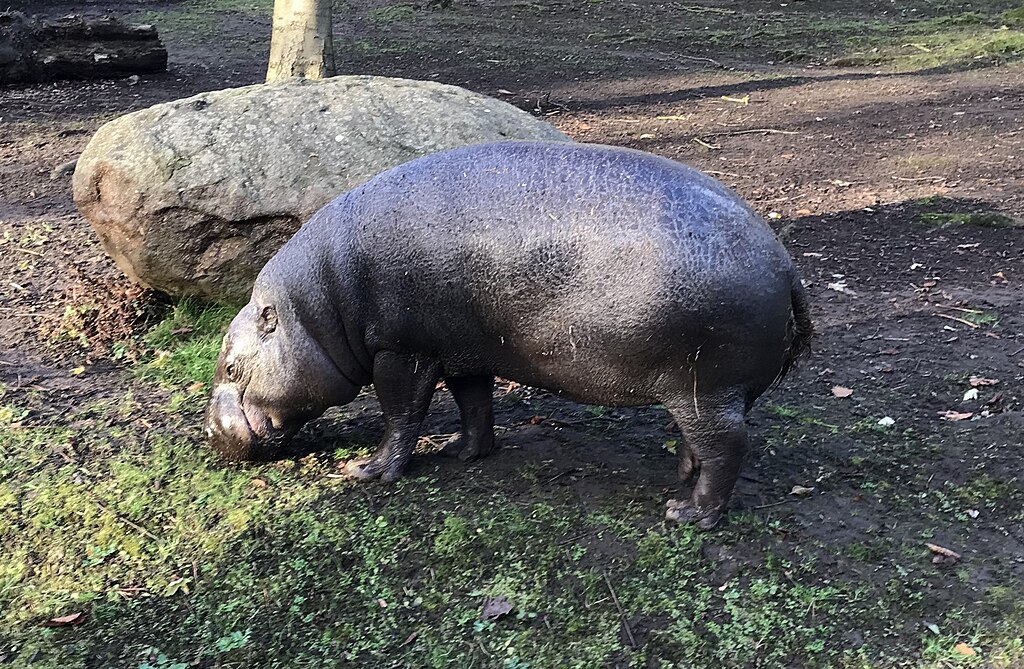 Pretzelles, CC BY-SA 4.0, Wikimedia Commons
Pretzelles, CC BY-SA 4.0, Wikimedia Commons
Billy Became A Polygamist
Billy's second mate—Matilda—was acquired when the National Zoo's director travelled to Liberia with the Smithsonian-Firestone Expedition. When Matilda arrived in America in 1940, a headline in The Washington Post trumpeted: “Pygmy Hippo to Become Polygamist”.
Matilda Plus Eight
From 1943 to 1956, Billy sired eight calves with Matilda. Six survived to adulthood. They, too, were all named Gumdrop.
Billy's Female Dynasty
Almost all of Billy's 23 offspring were female; of the first 16, only one was male. Research has since confirmed that all pygmy hippos in captivity give birth to more females than males—although Billy's ratio remains extreme. Science has not been able to pinpoint the reason for this discrepancy.
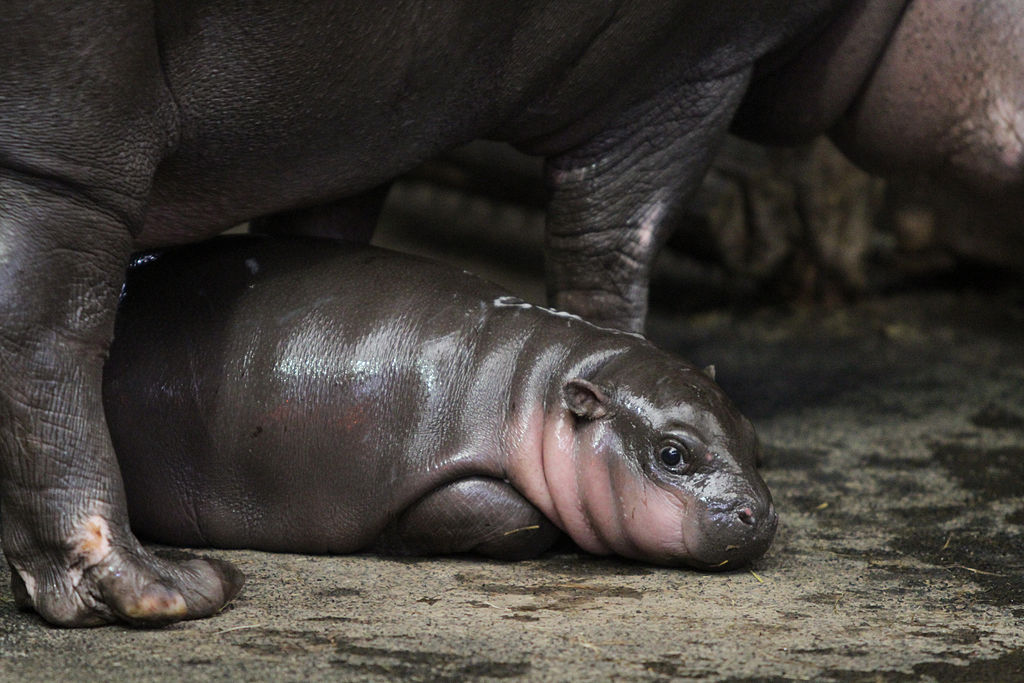 Sander van der Wel, CC BY-SA 2.0, Wikimedia Commons
Sander van der Wel, CC BY-SA 2.0, Wikimedia Commons
Billy Was Beloved Across America
Although Billy and his family lived in Washington, DC, they were celebrities right across America. Their popularity led to travel and media opportunities. In 1939, Billy and at least one of his family (likely Gumdrop I) travelled to the New York World's Fair in Queens. They were exhibited in the Firestone pavilion.
Life Magazine Spread
Throughout the 1940s and early 1950s, the pygmy hippo throuple and the Gumdrops made several media appearances. In 1952, they were featured in a photospread in Life magazine.
Billy's Incredible Legacy
Billy's notable life came to an end on October 11, 1955. He was only about 30 years old, which is relatively young. The lifespan for pygmy hippos in captivity ranges from 30-55 years. Despite his untimely demise, Billy left behind an important legacy.
New Era Of Wildlife Conservation
The National Zoo's foray into animal husbandry, spurred specifically by their plan to breed Billy, introduced a new era of wildlife conservation. The practice of breeding captive species is especially important for vulnerable and endangered animals.
Pygmy Hippopotamus Animal Husbandry Flourished
Knowledge about pygmy hippo reproduction was extremely limited before Billy arrived at the National Zoo. Once zookeepers and scientists were able to monitor Billy, Hannah, Matilda, and their offspring, that knowledge grew significantly and helped pygmy hippos flourish in captivity. At the National Zoo alone, 58 baby pygmy hippopotami were born after Billy's arrival.
Billy's Descendants Populate Zoos Around The World
The National Zoo no longer exhibits pygmy hippos but Billy's descendants continue to populate zoos around the world. The Gumdrops were sent to American zoos and circuses as well as international locations such as Sydney, Australia, and London, England. Billy is the direct ancestor of almost all pygmy hippopotami in the USA.
Pygmy Hippopotami Are Endangered In The Wild
Encroachment continues on the forest habitat that pygmy hippopotami call home in West Africa. It's estimated that less than 2,500 are alive in the wild. Their species is considered endangered and listed on the International Union for Conservation of Nature (IUCN) Red List of Threatened Species.
Billy's Descendants Play A Pivotal Role
Because pygmy hippopotami are difficult to study in the wild and are considered an endangered species, Billy's descendants are important. They help keep the species alive and provide scientists with a way to study their habits and biology.
Getting Your Pygmy Hippopotamus Fix
If you've been captivated by Moo Deng's memes or the story about Billy and his family, you don't have to go all the way to Thailand to see a pygmy hippo in person—there's a sassy youngster named Petunia at the Metro Richmond Zoo in Virginia. She was born in December 2022.
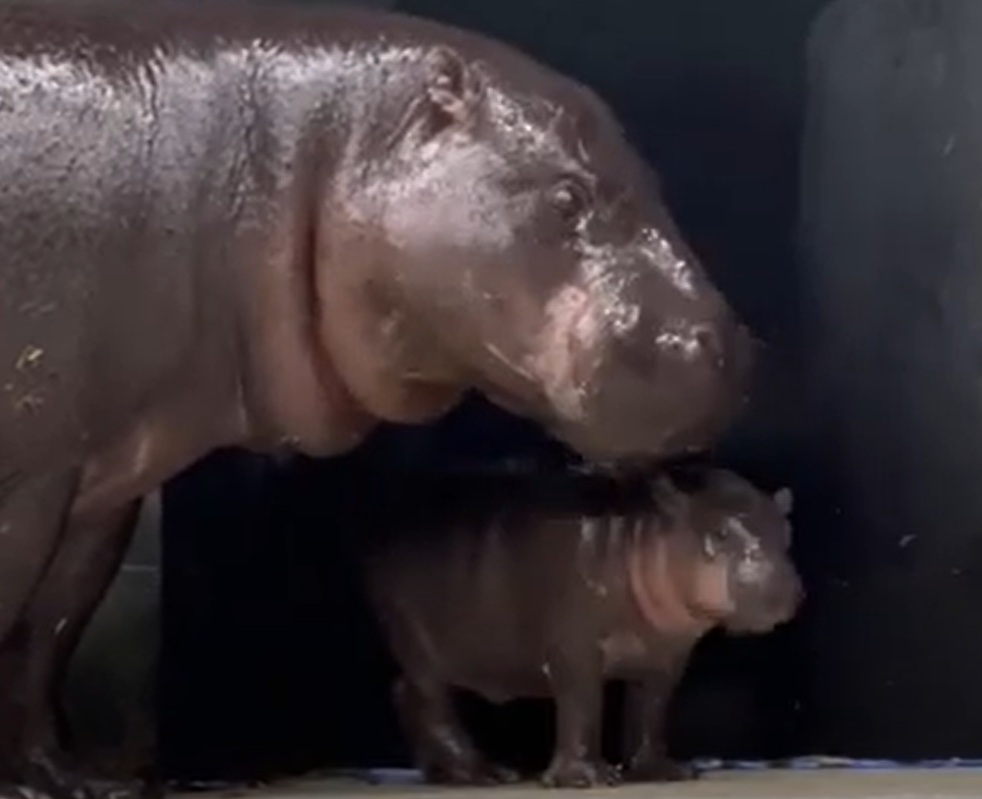 Metro Richmond Zoo announces name of baby Pygmy hippo, 13News Now
Metro Richmond Zoo announces name of baby Pygmy hippo, 13News Now


